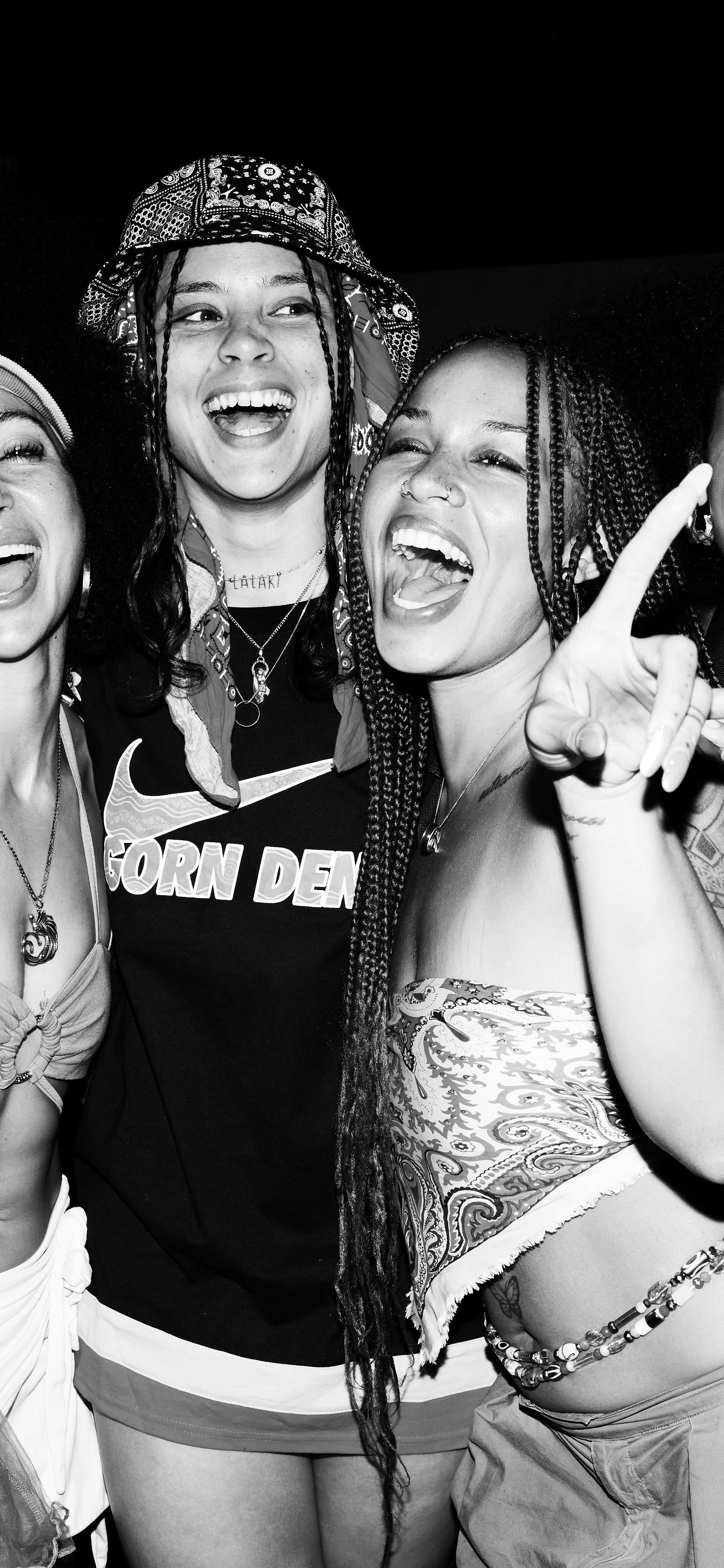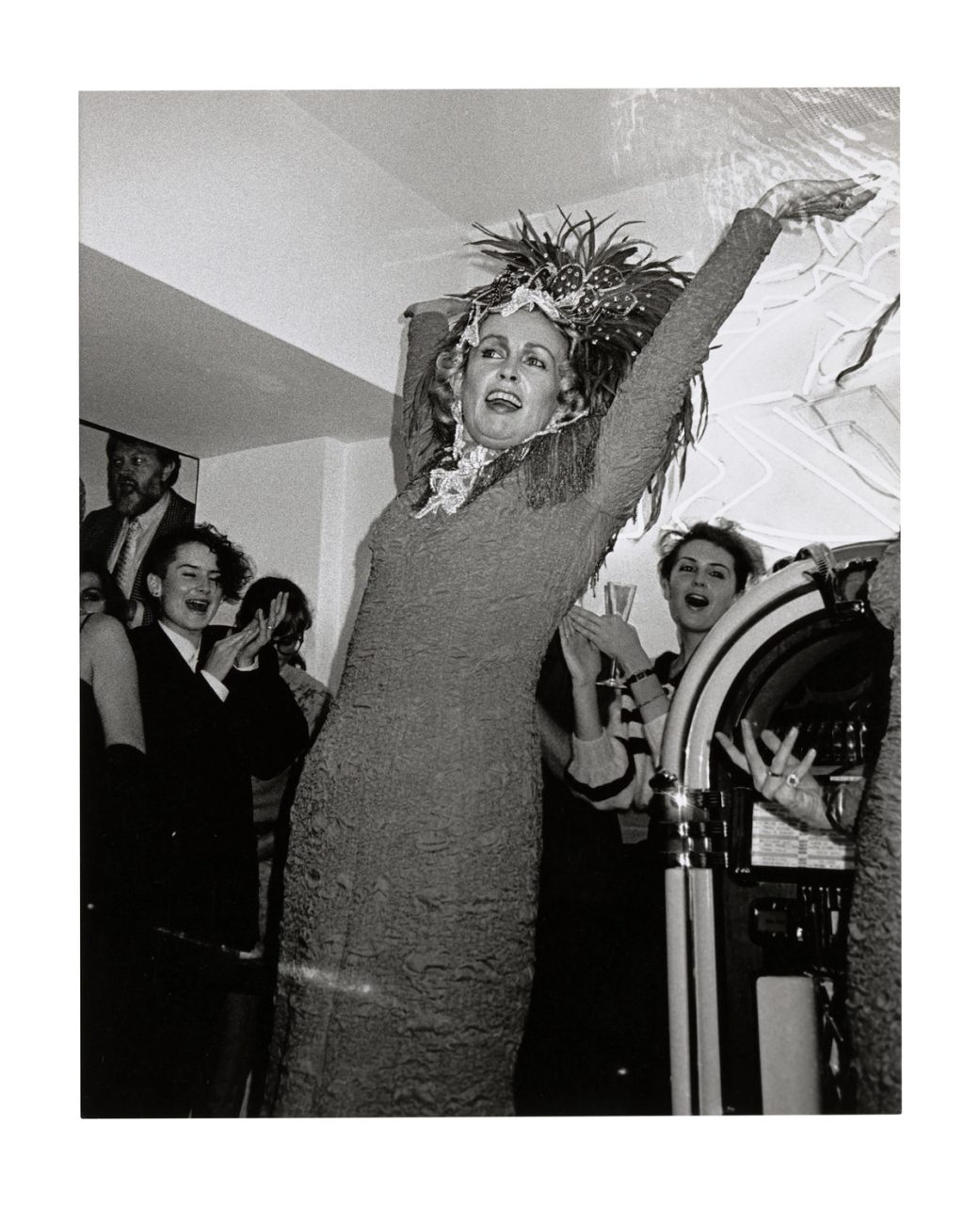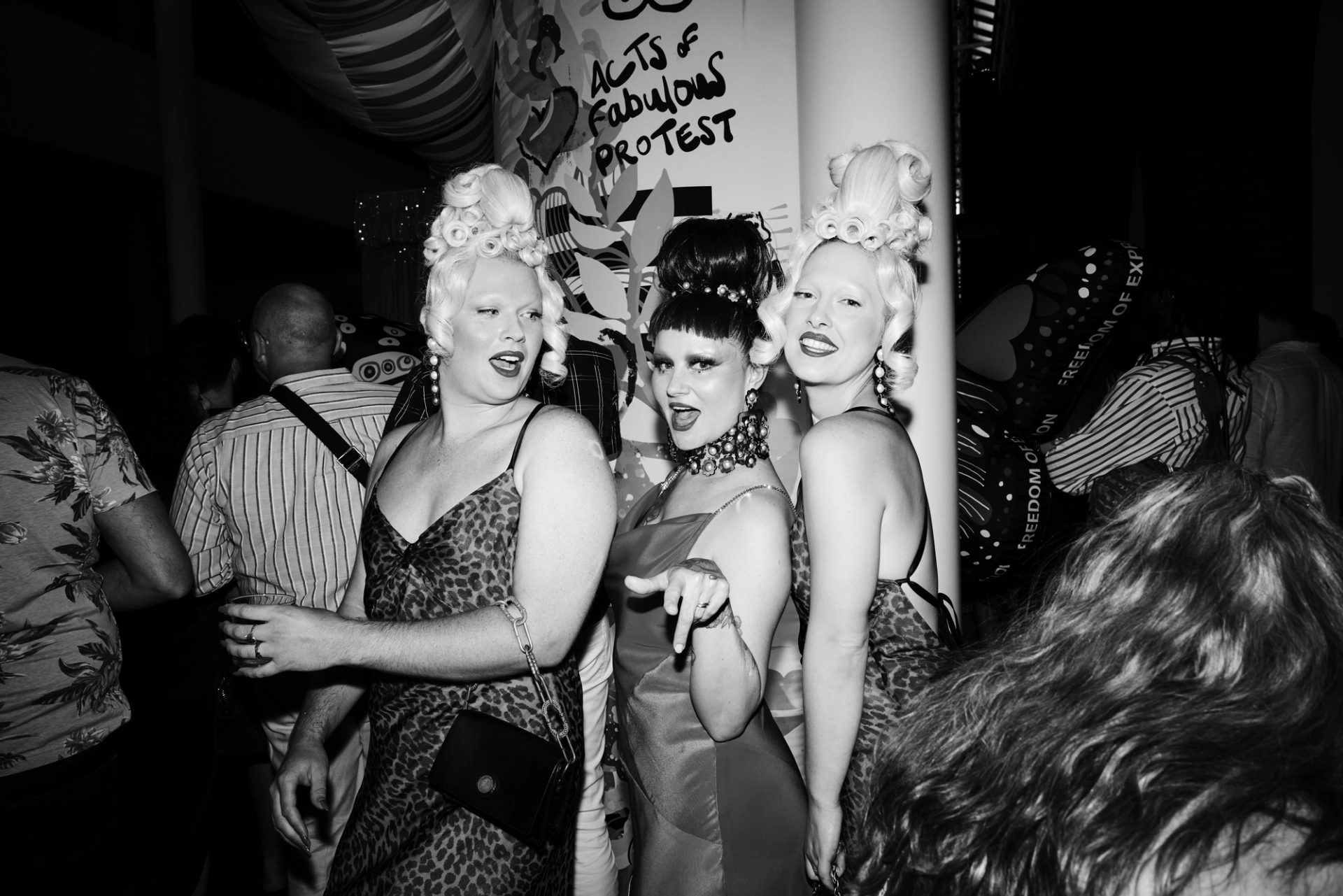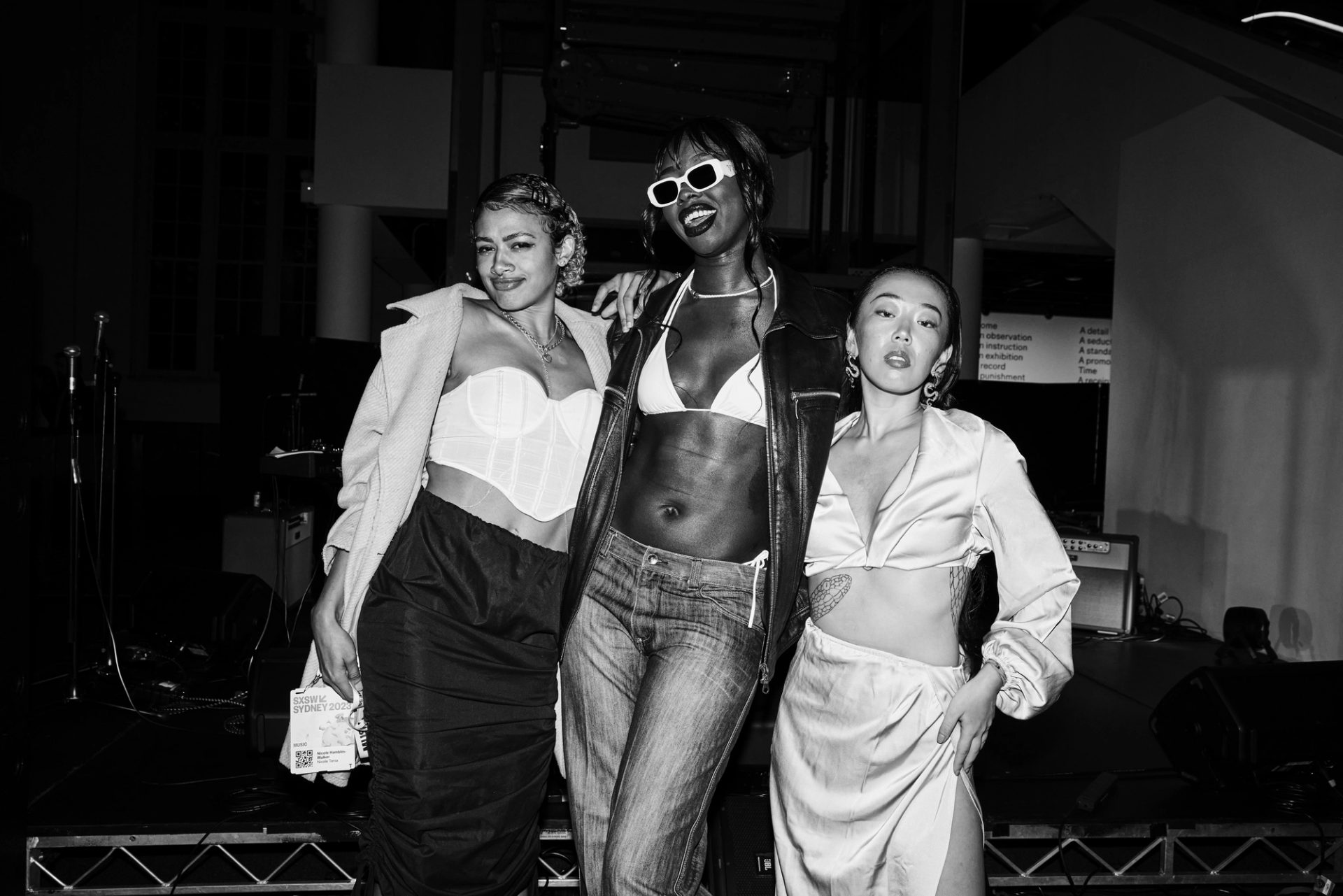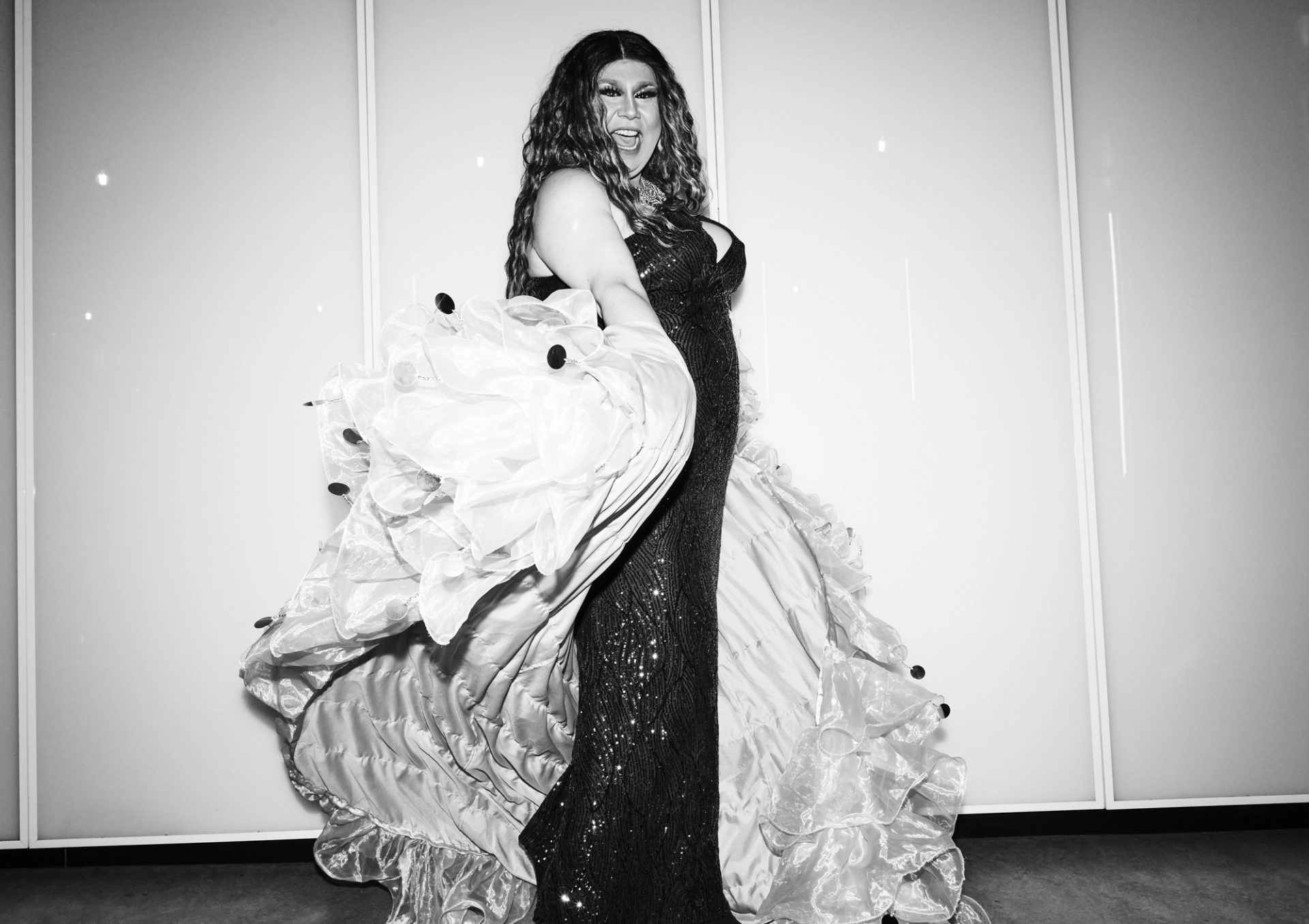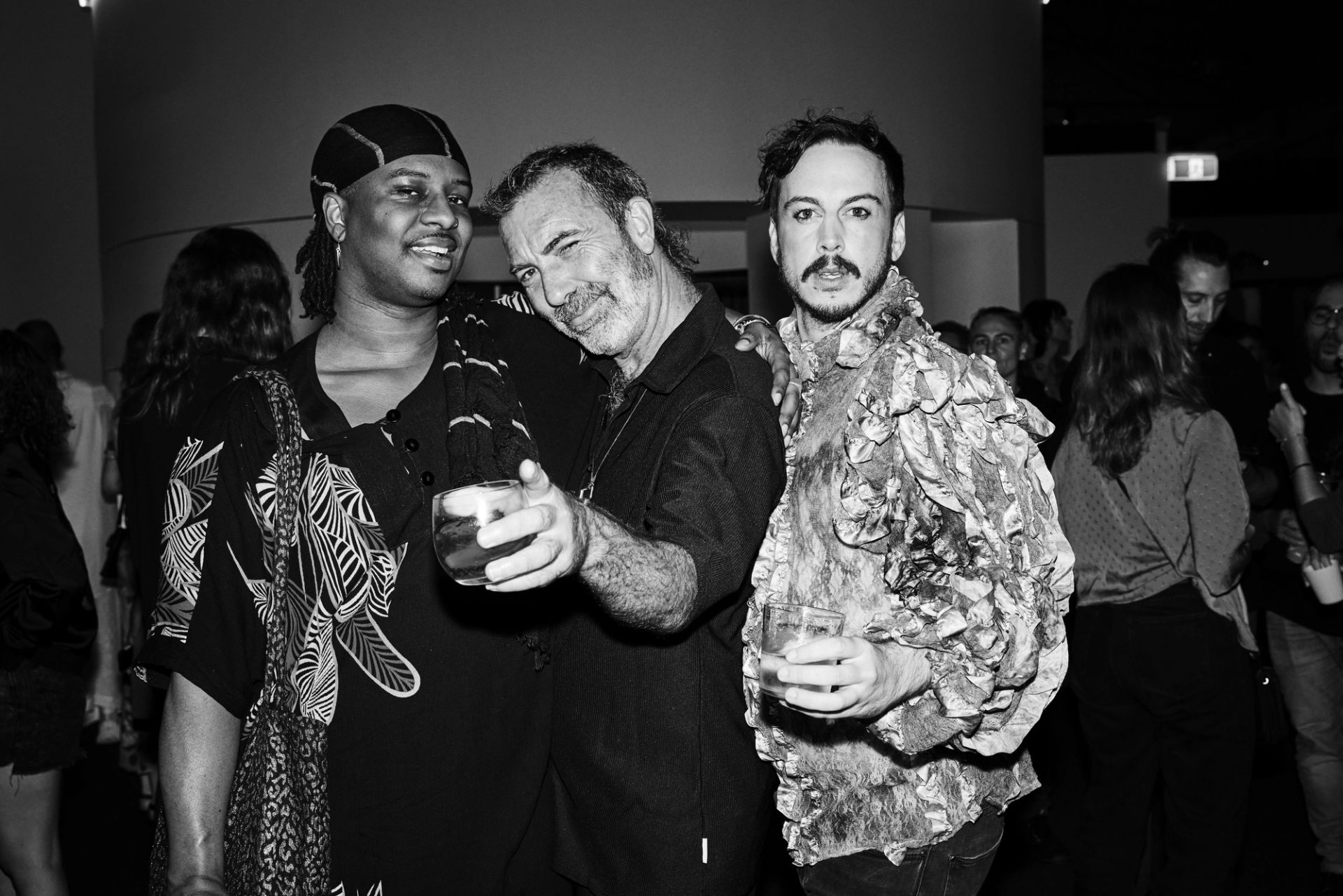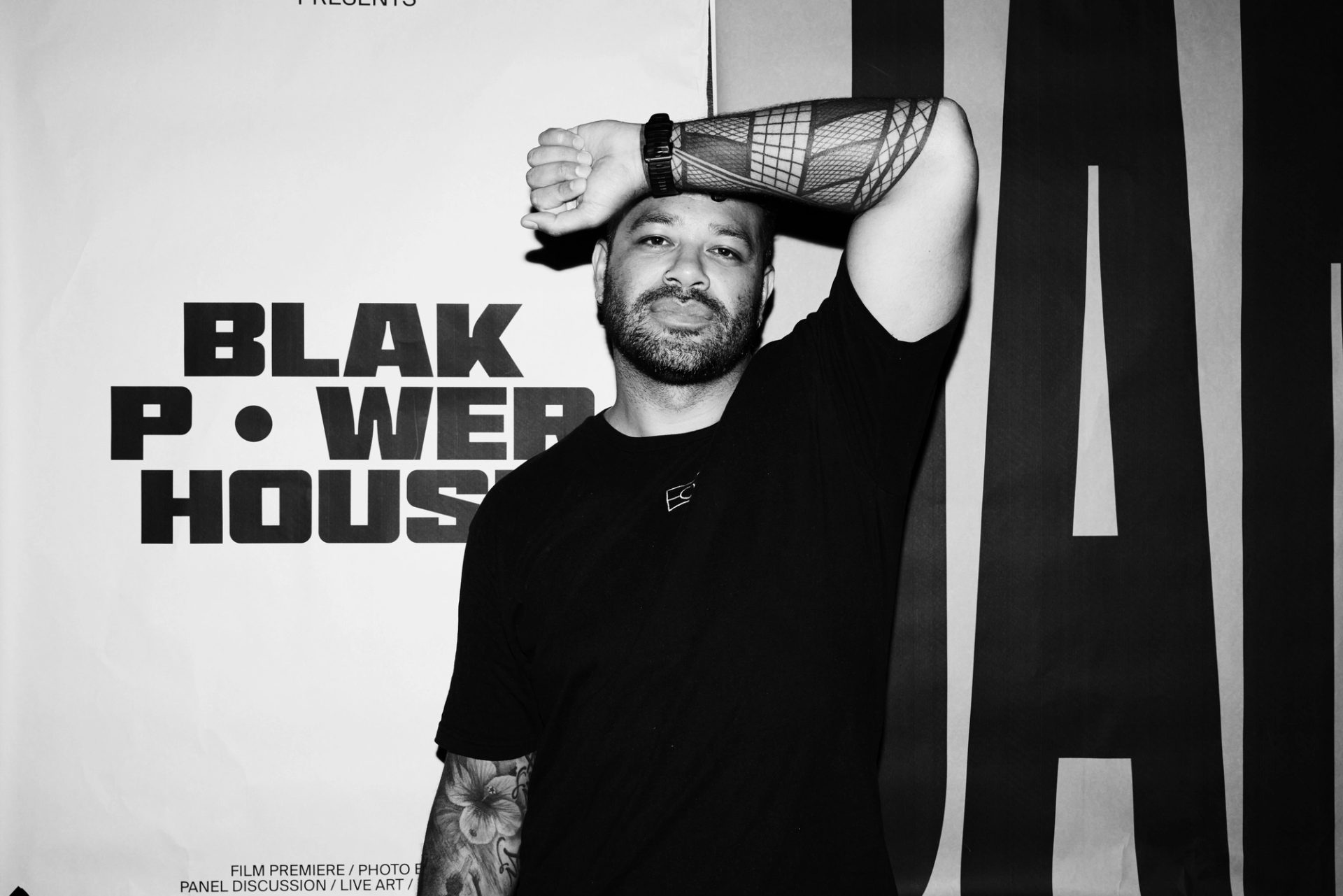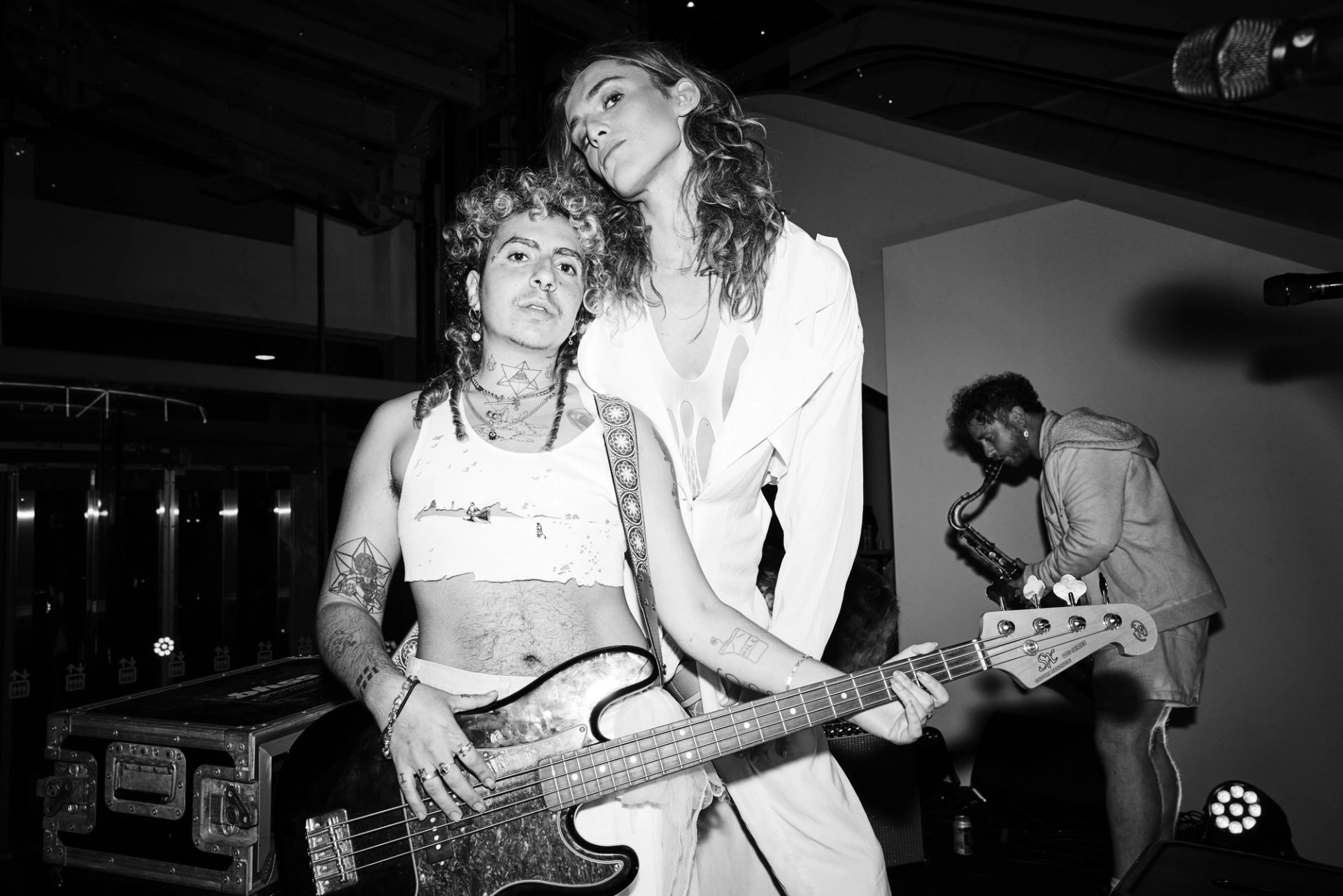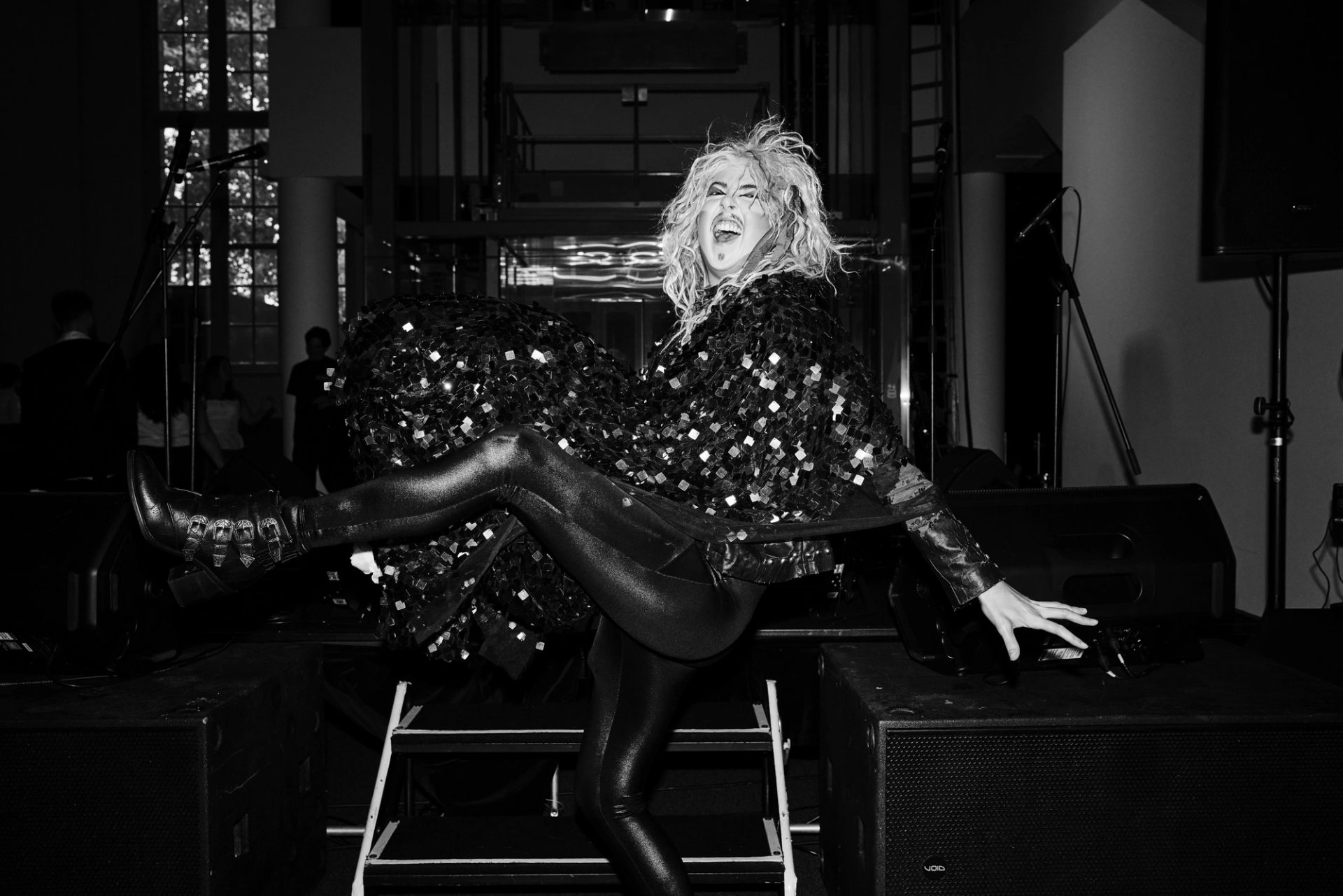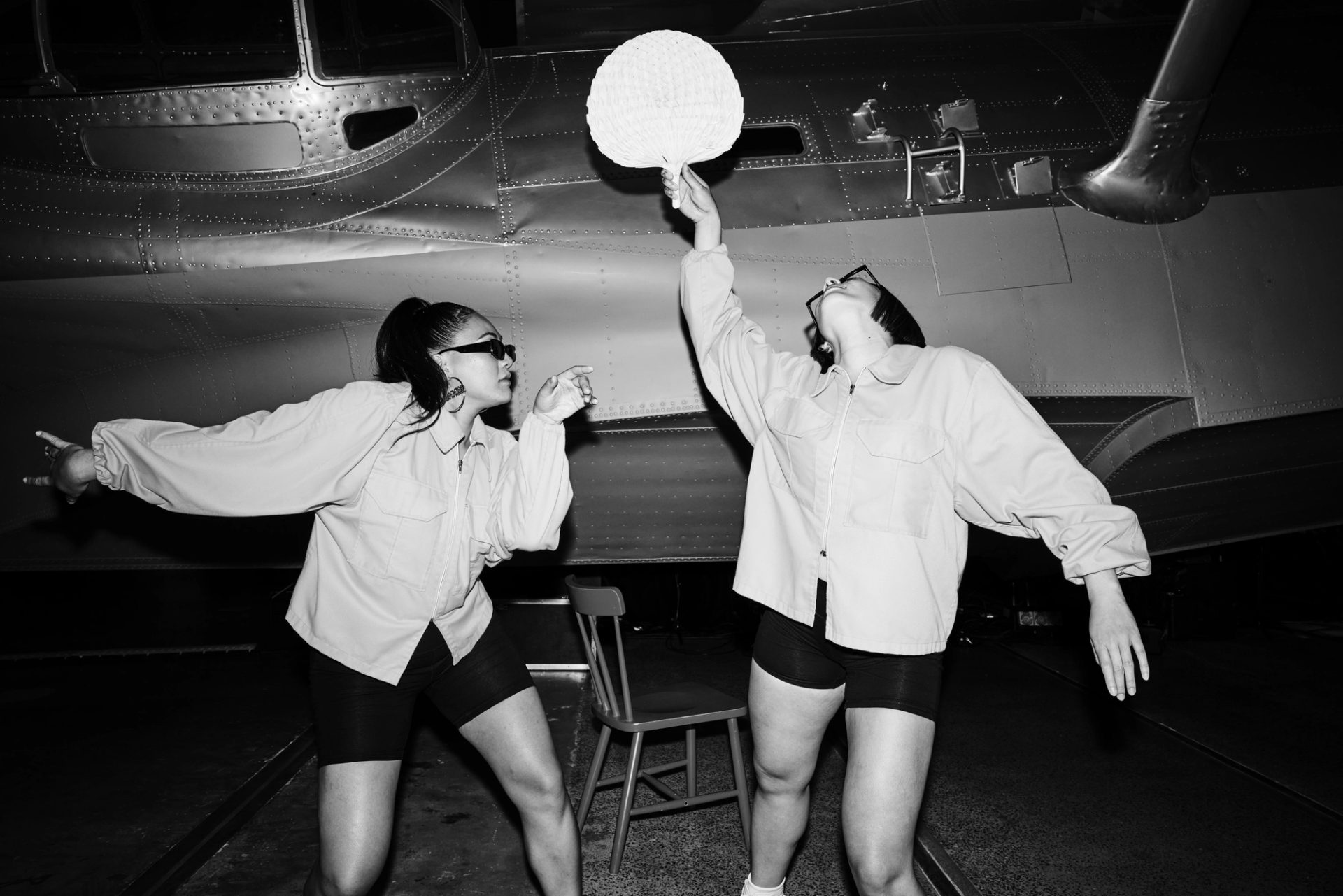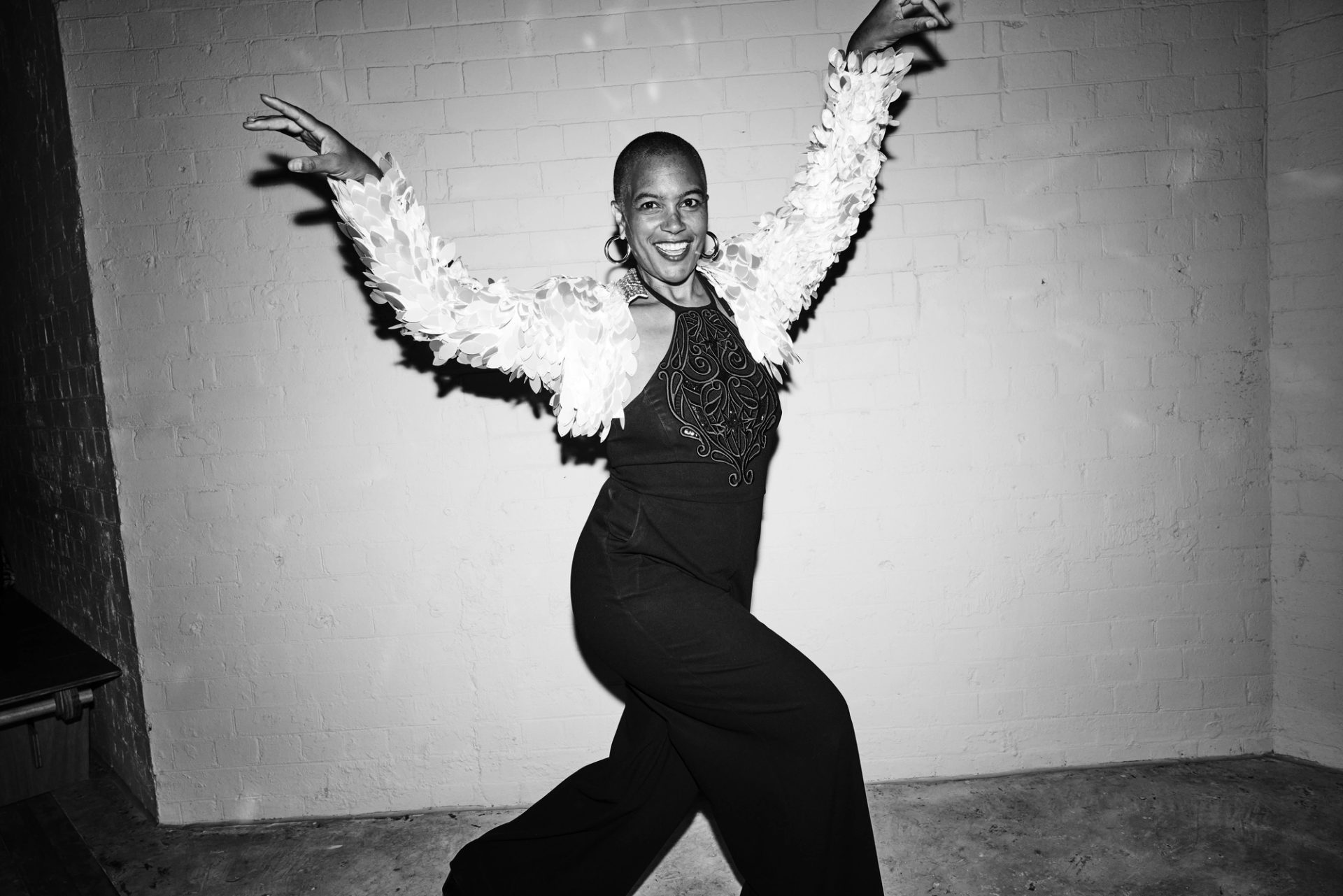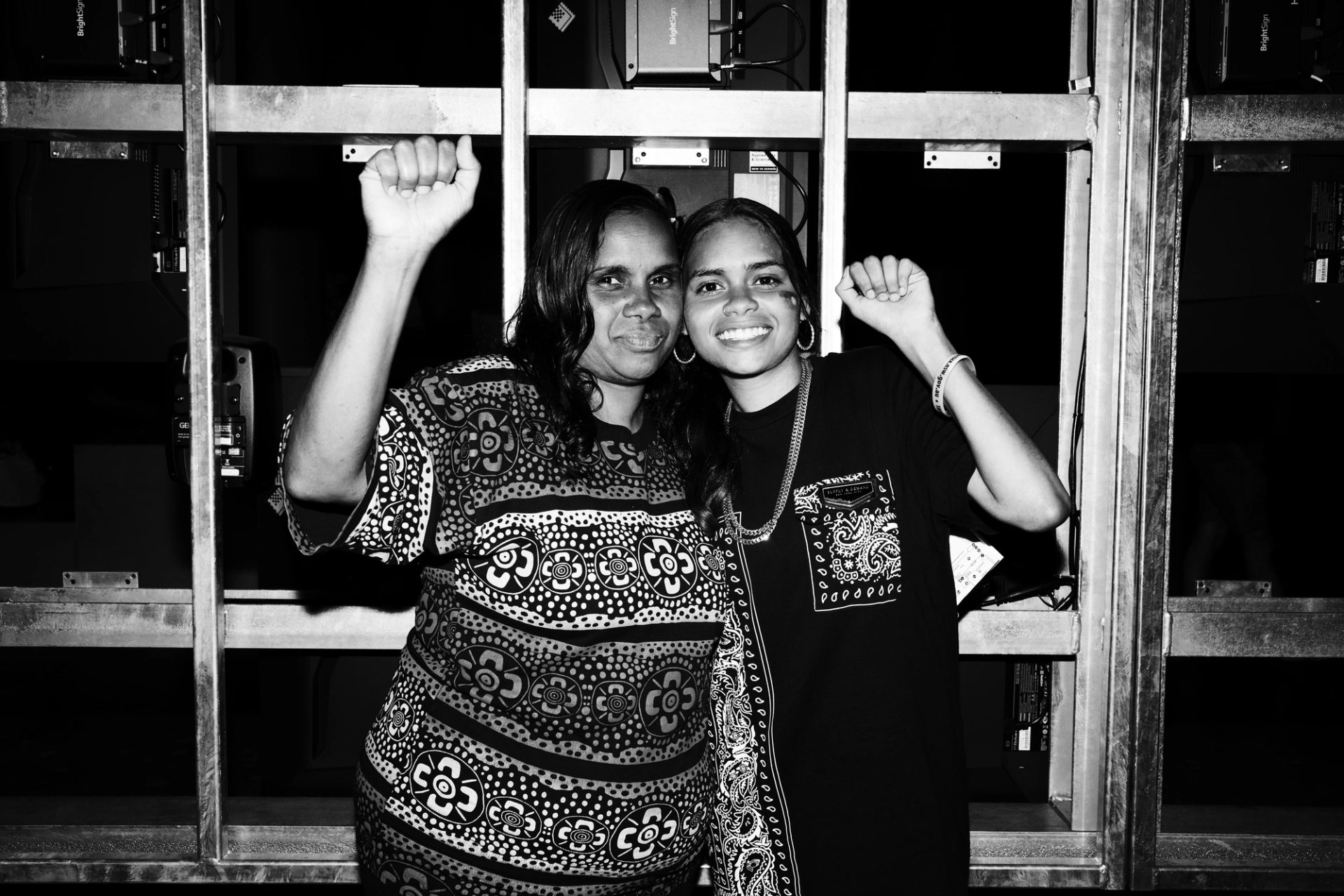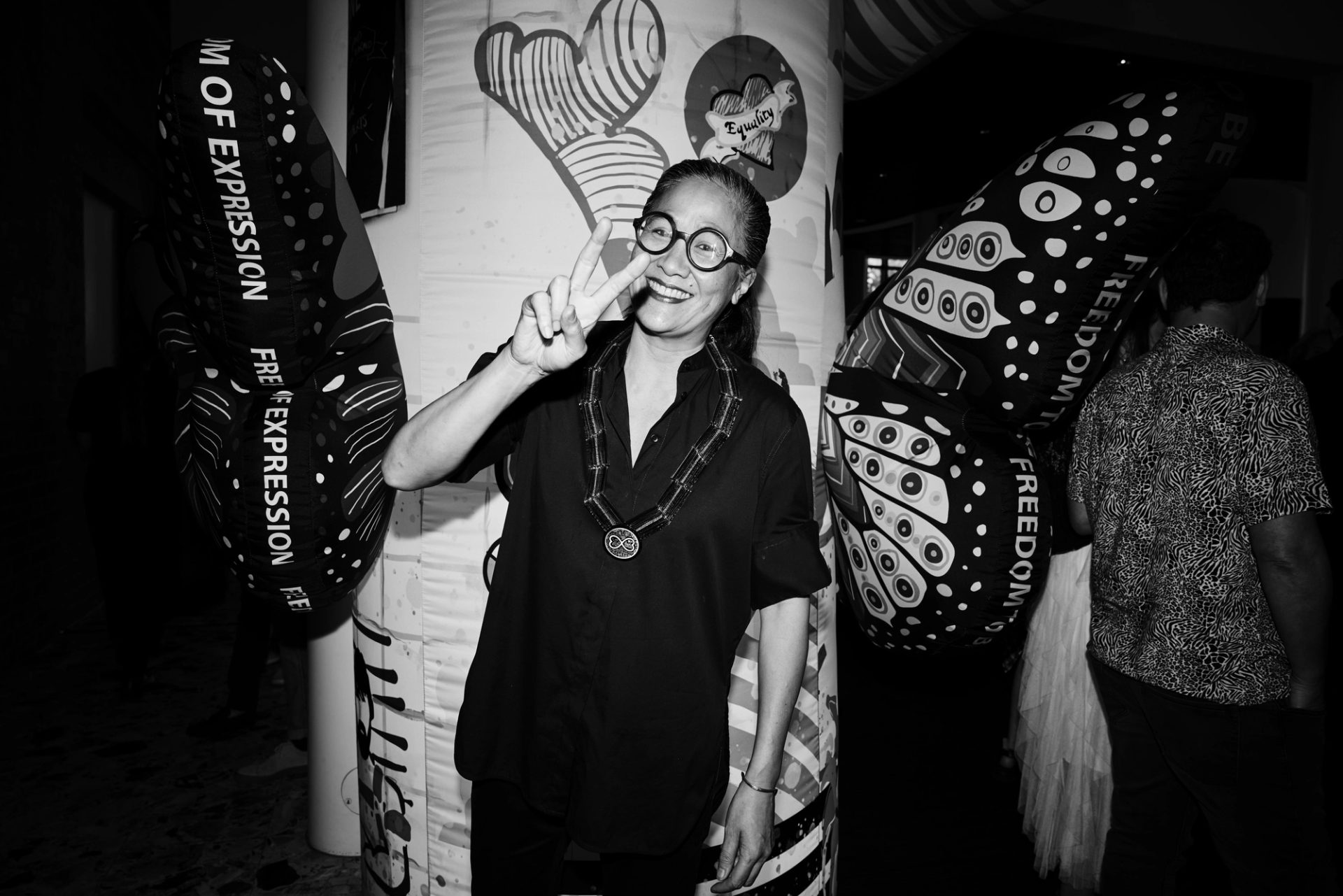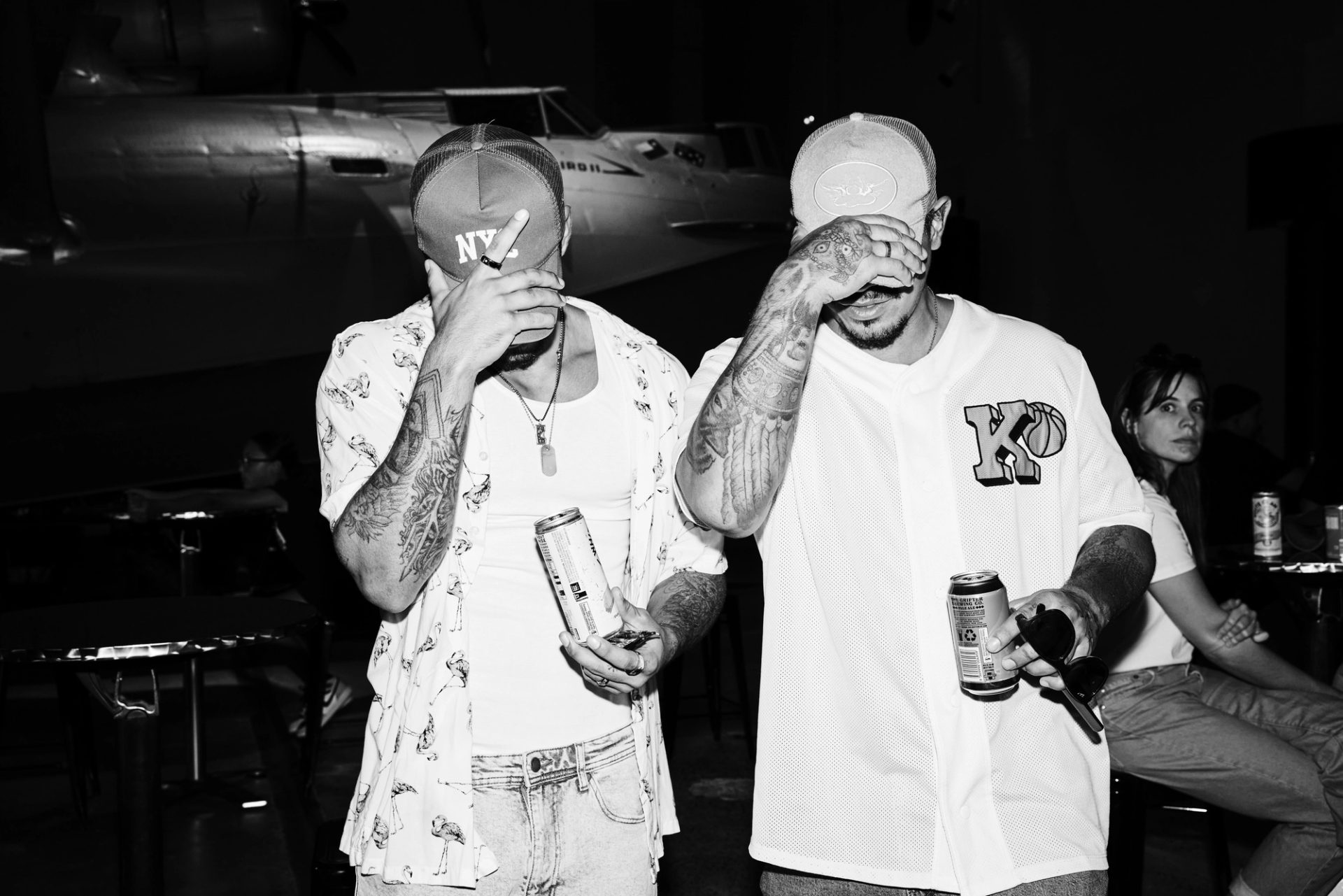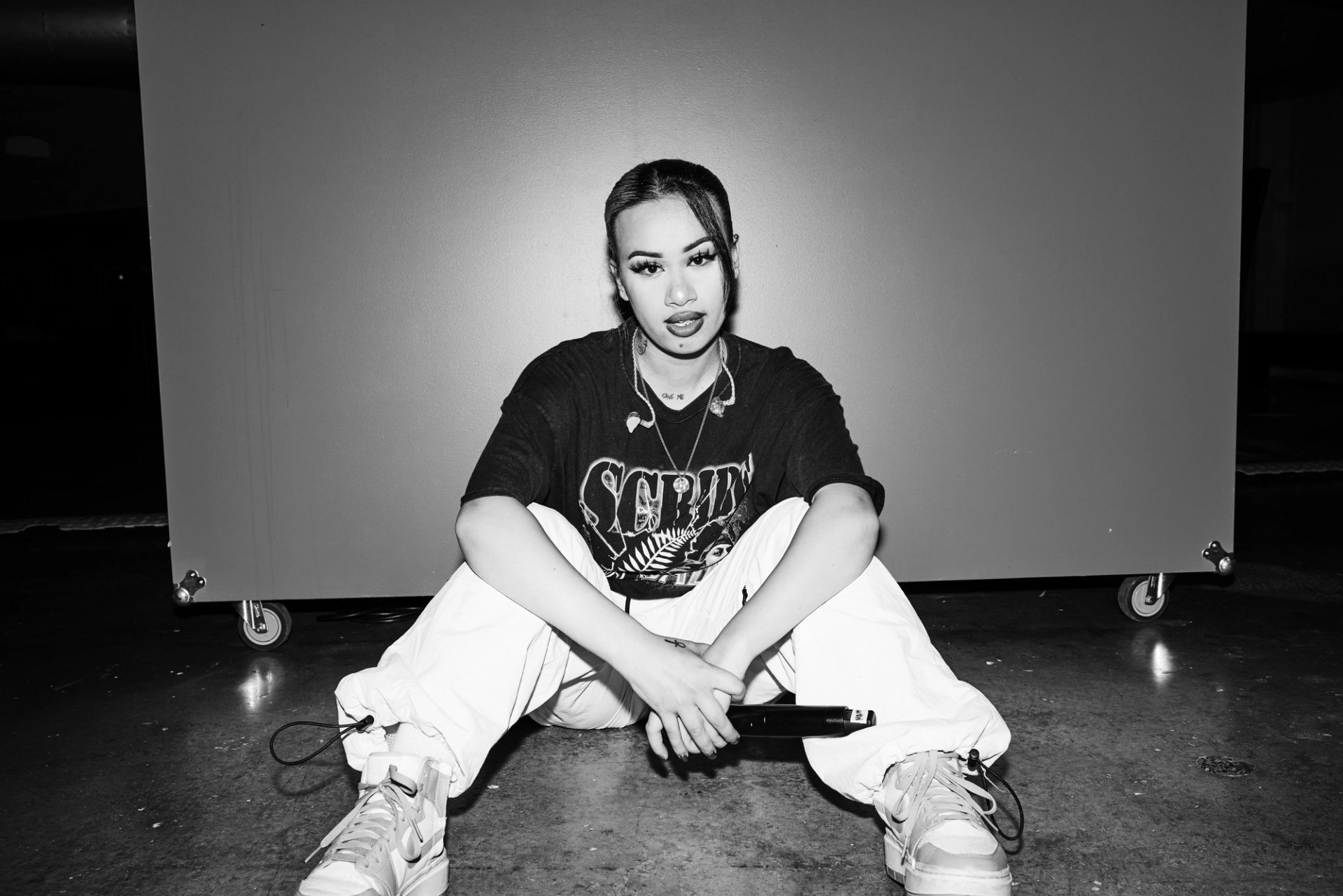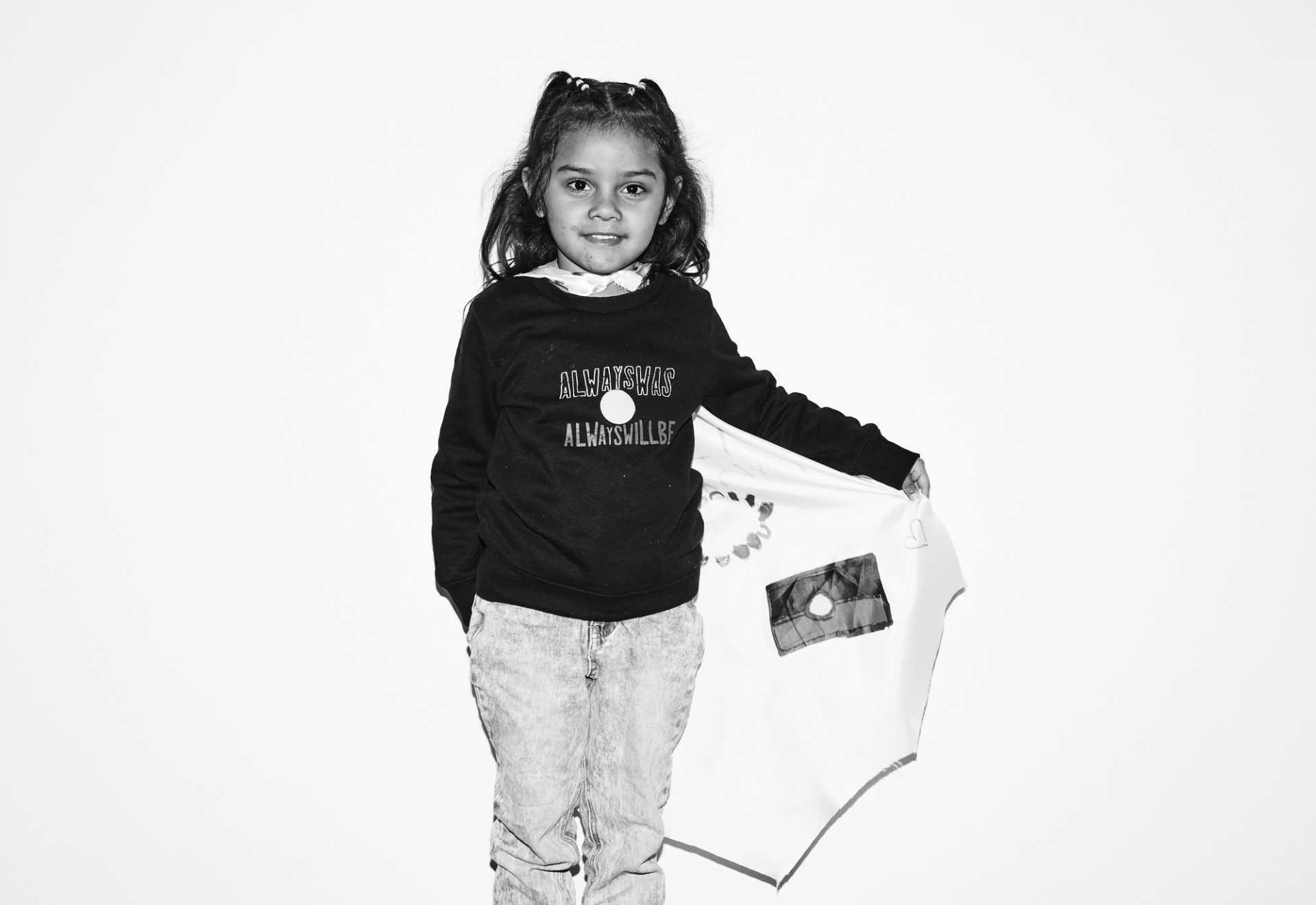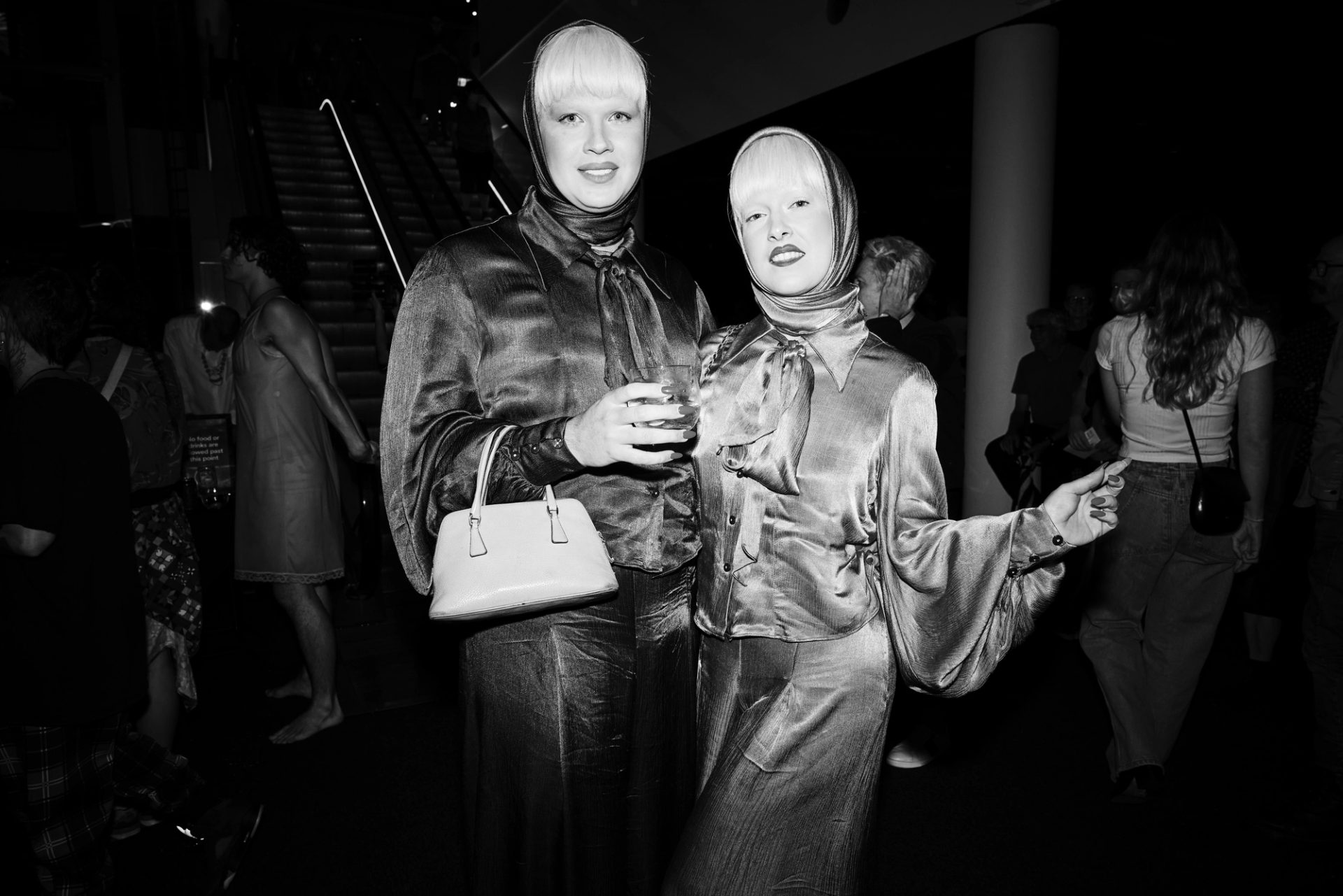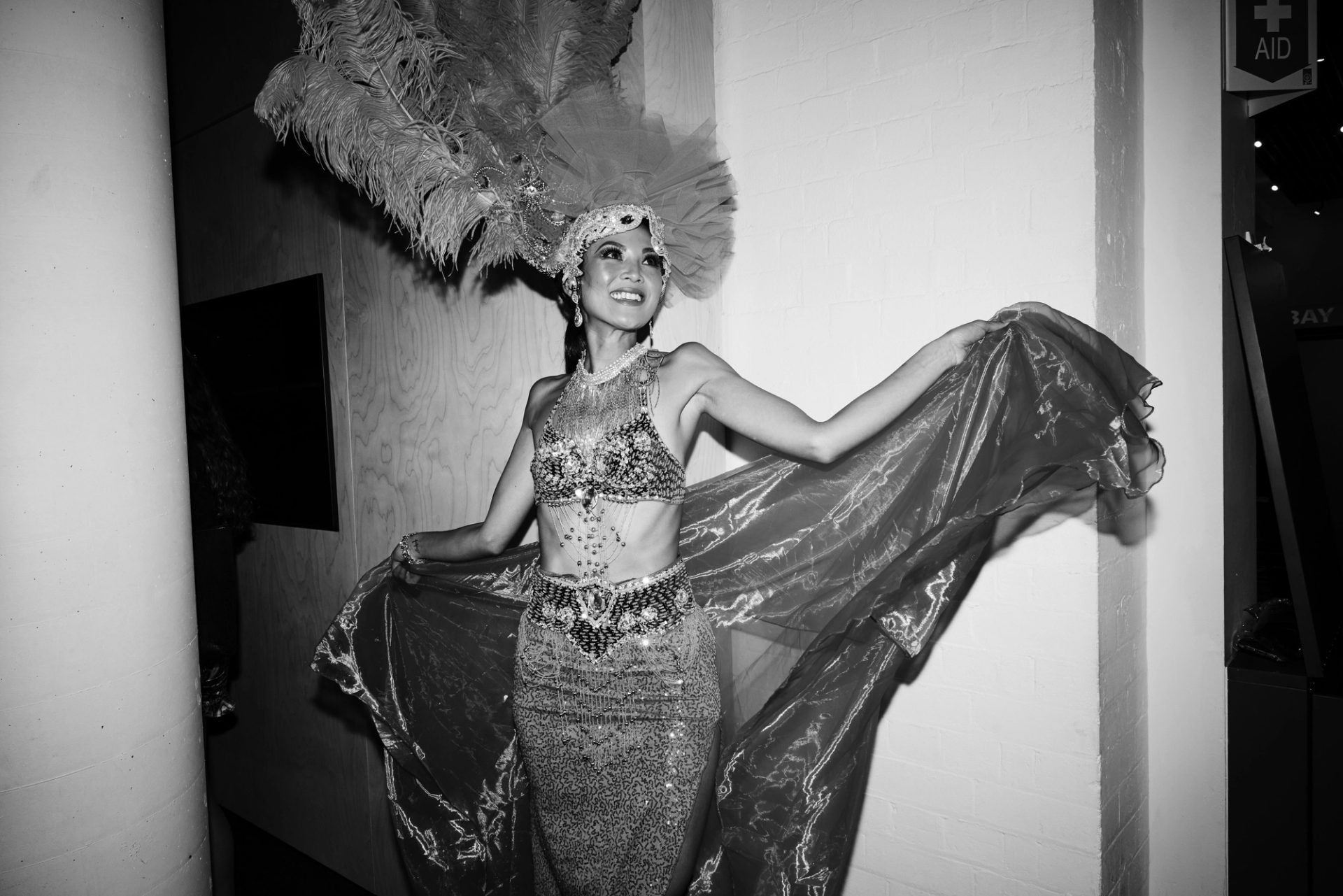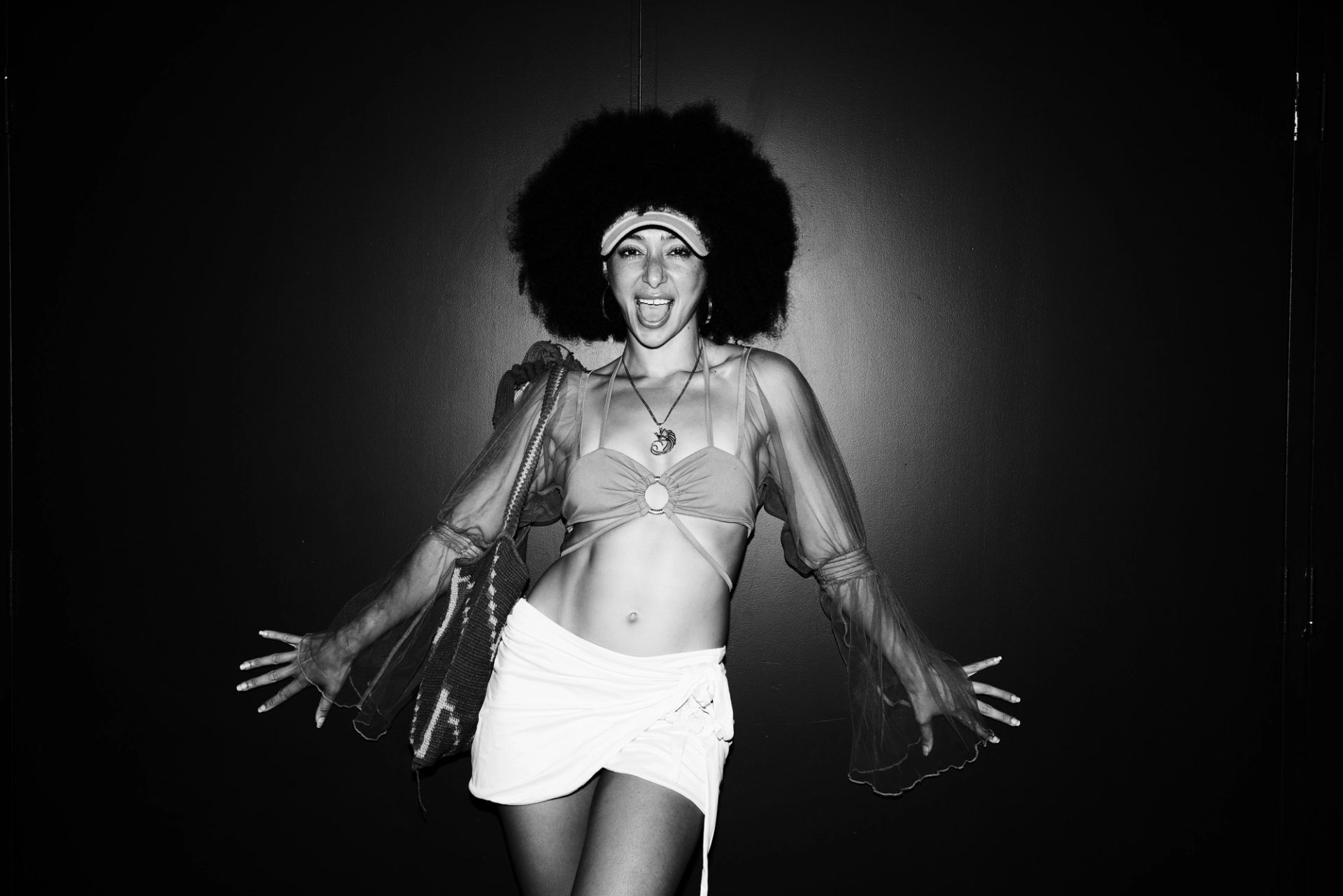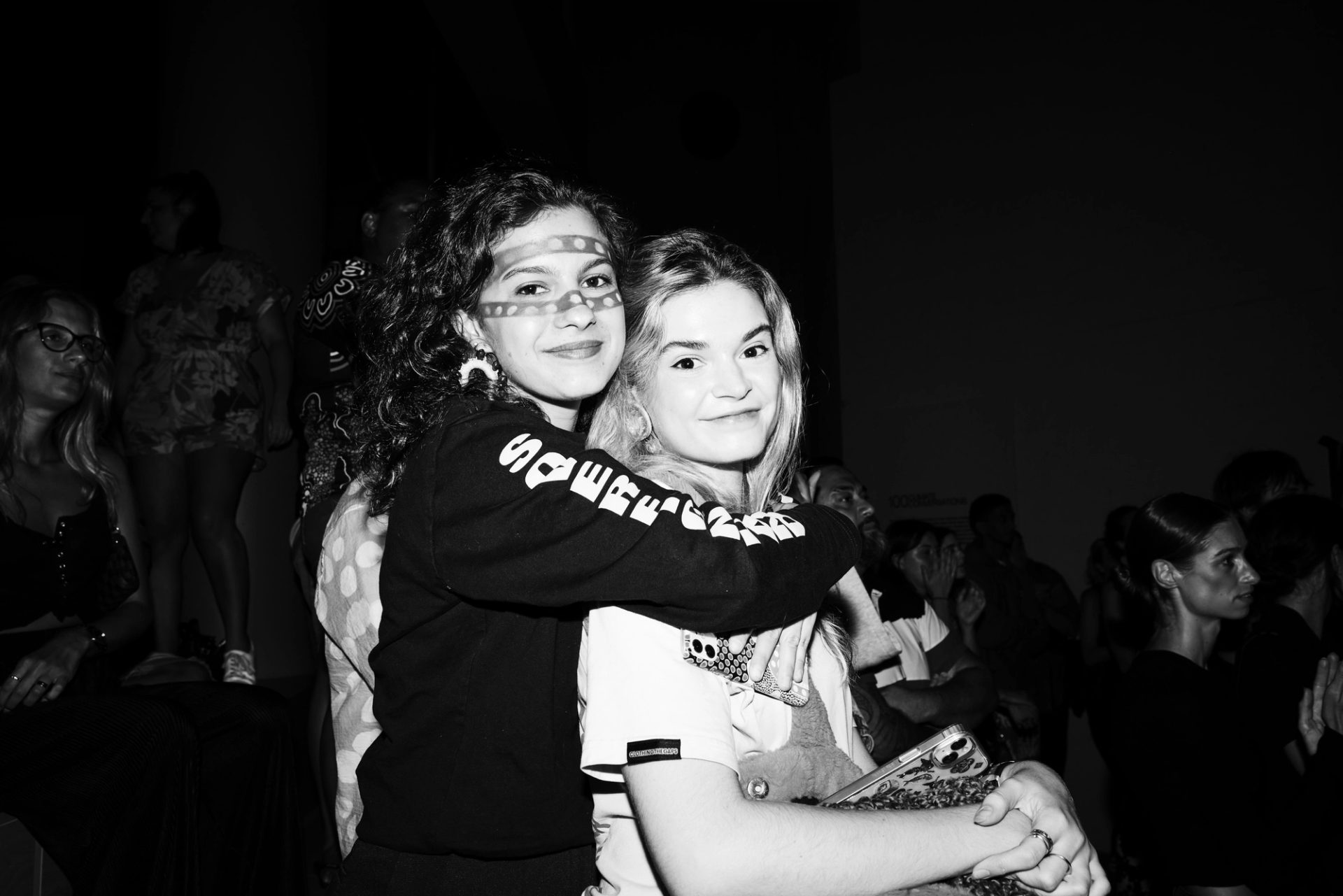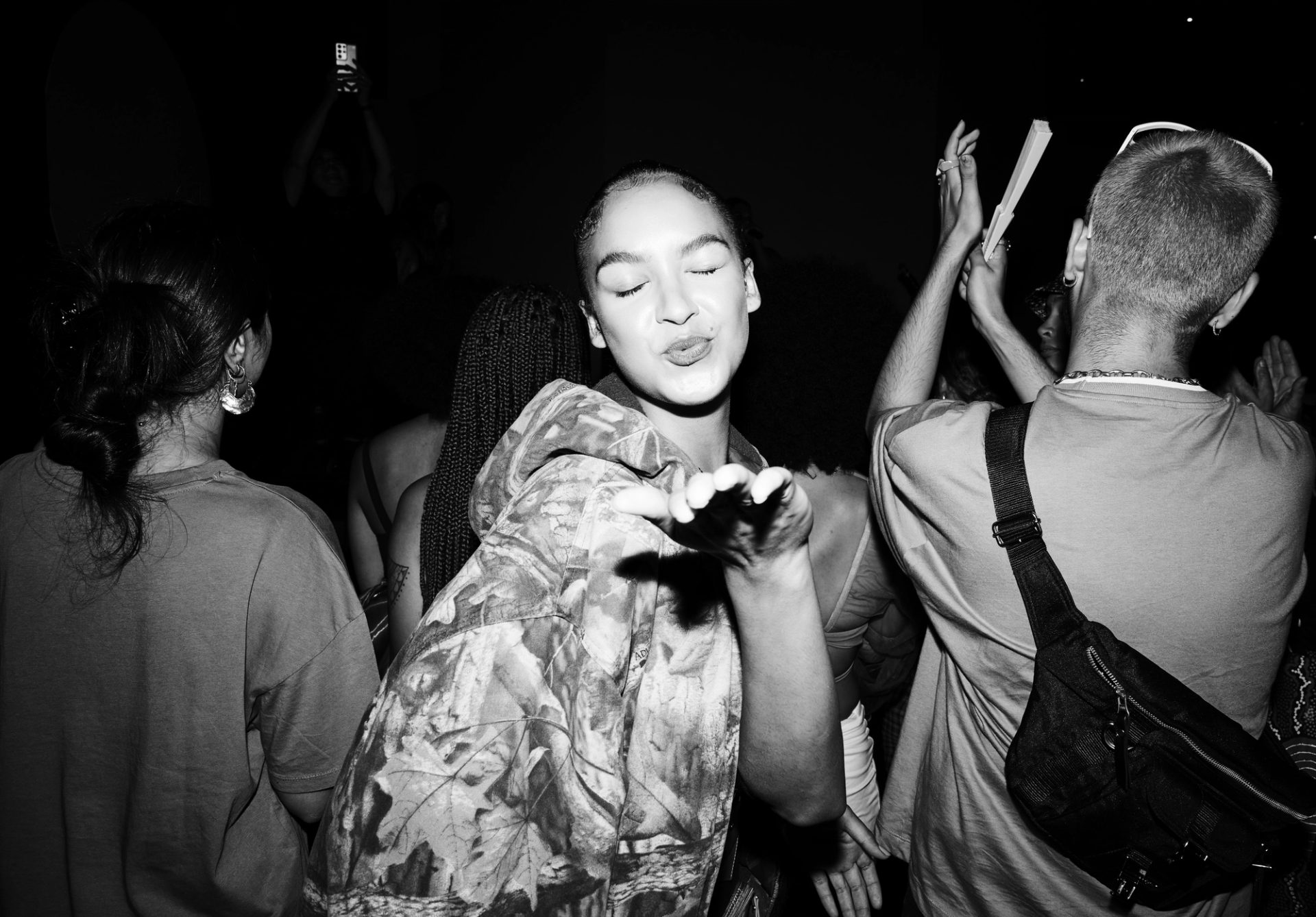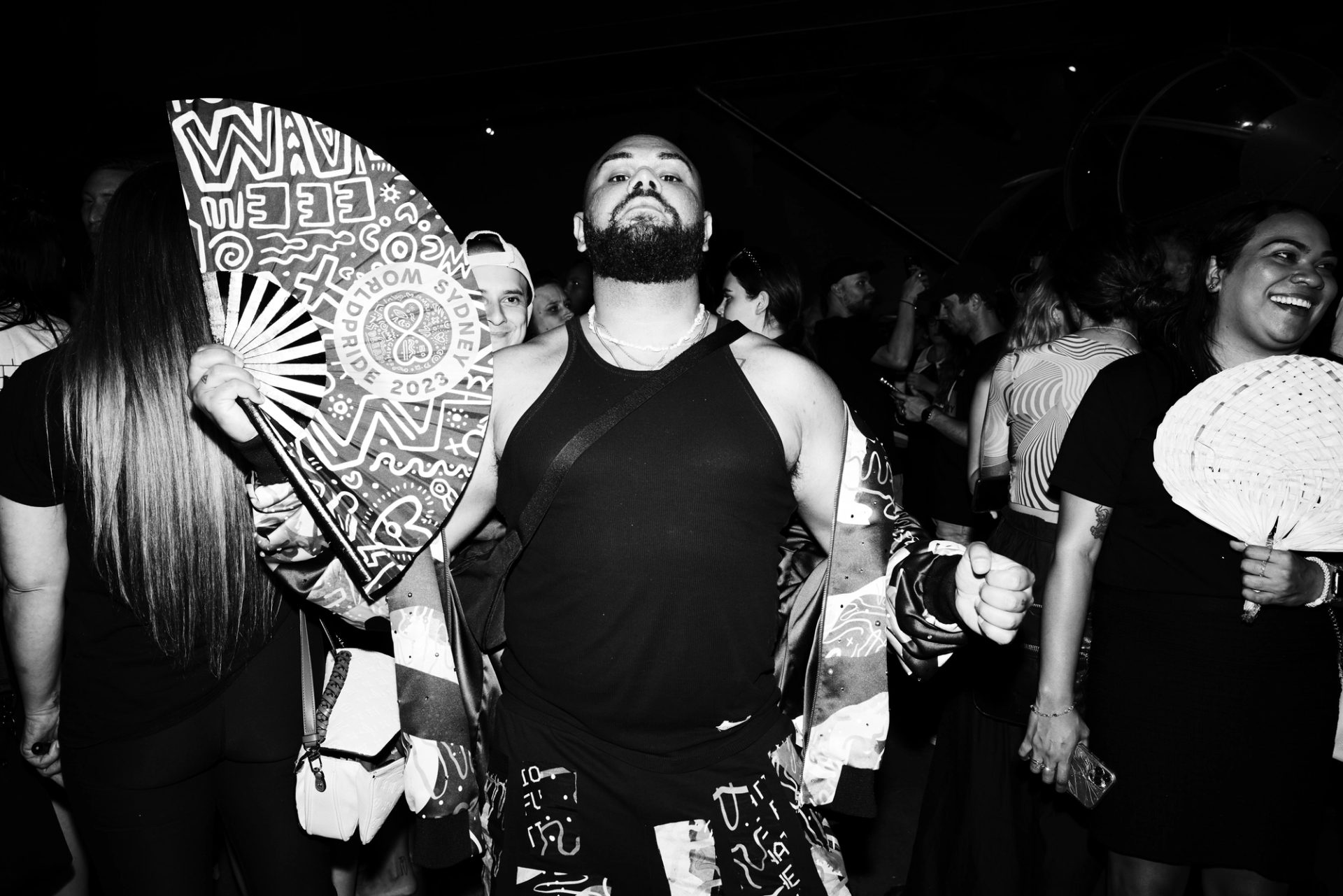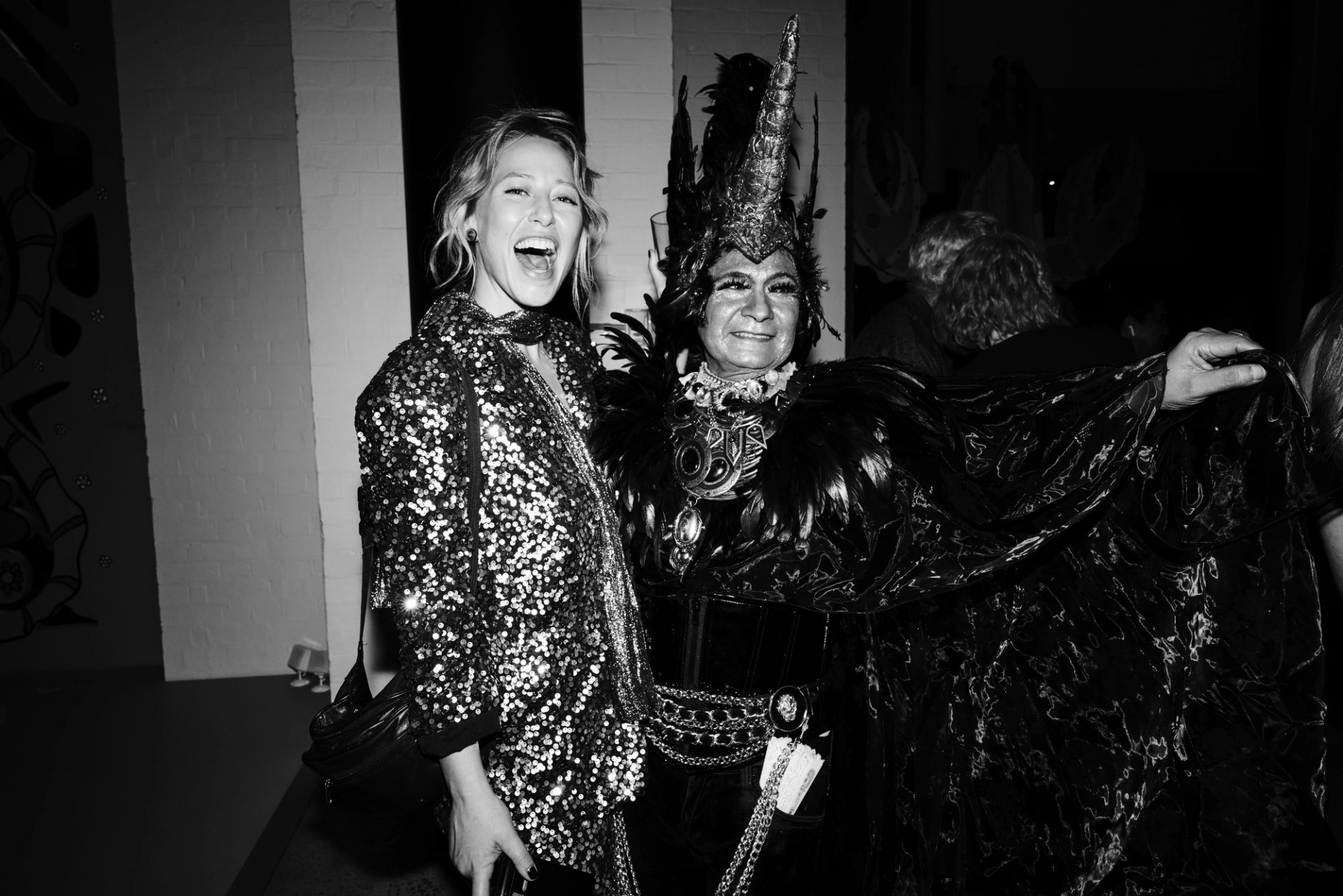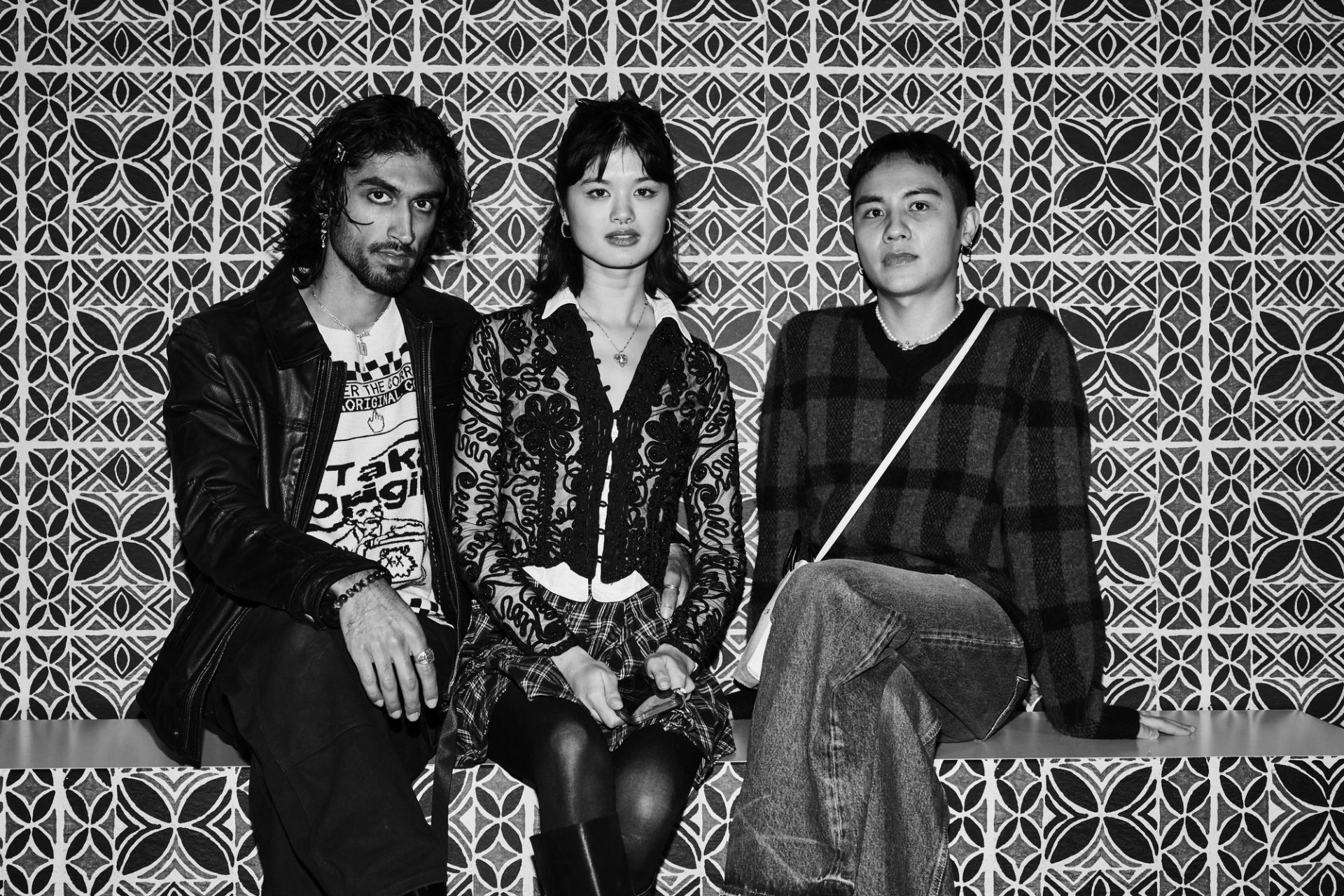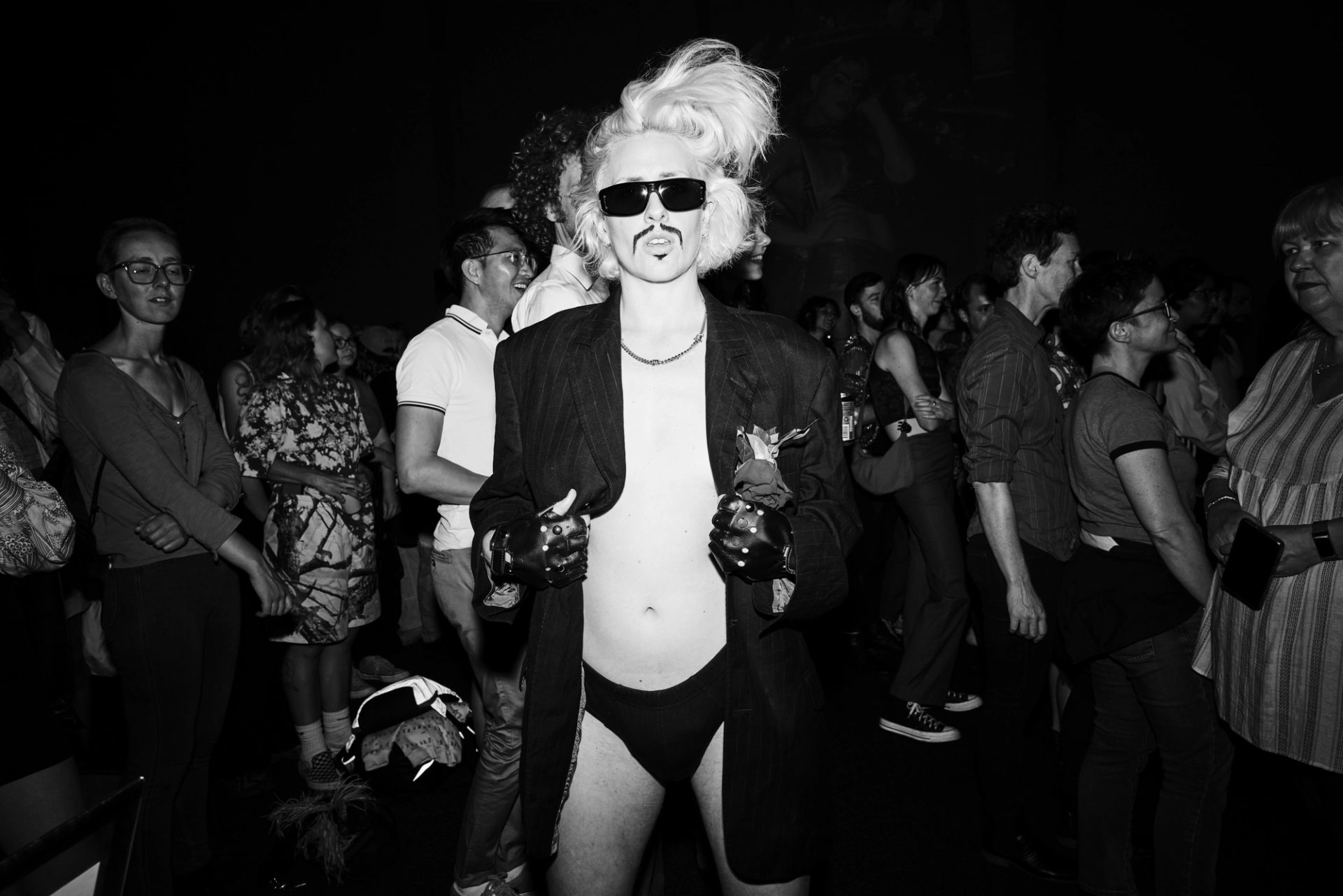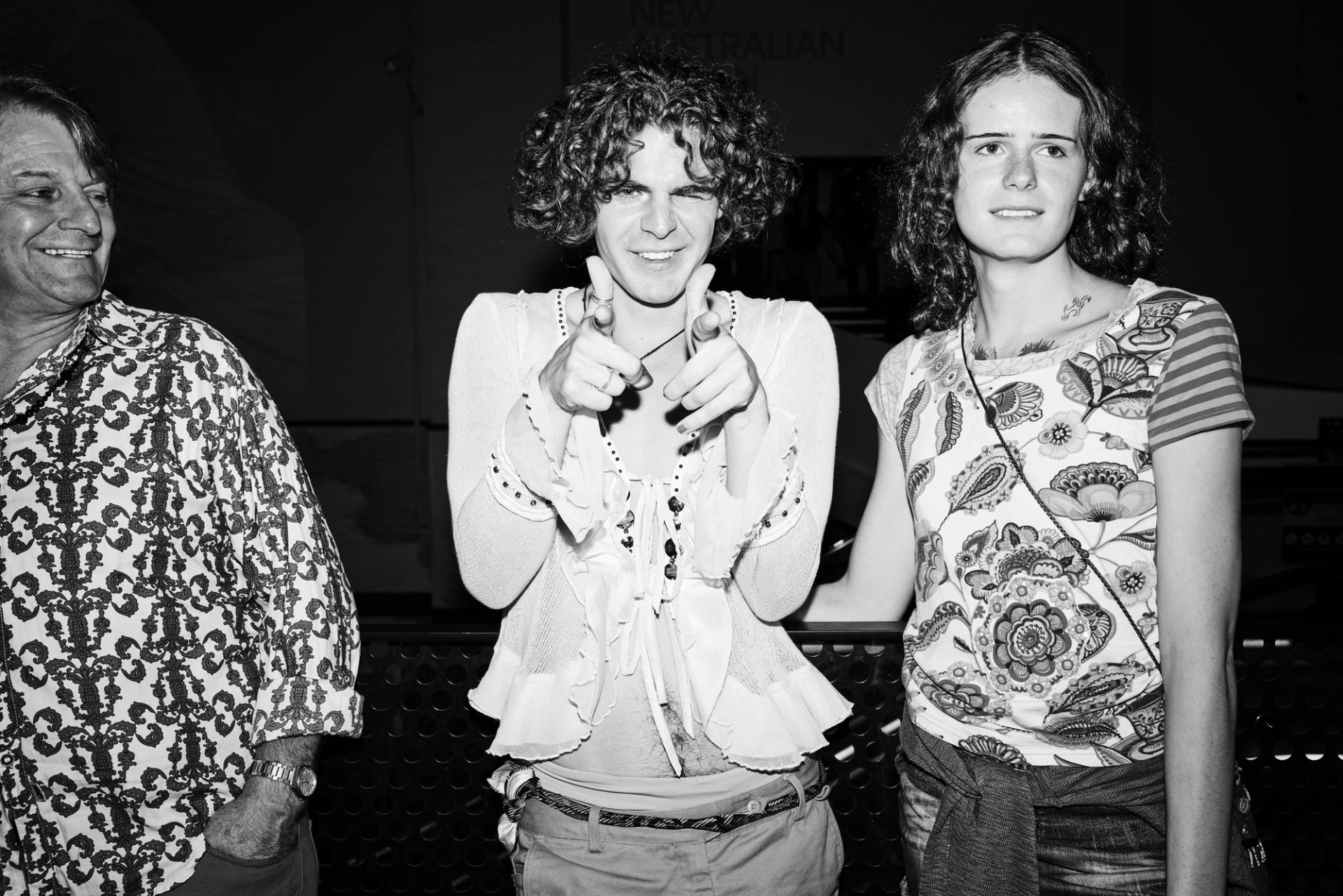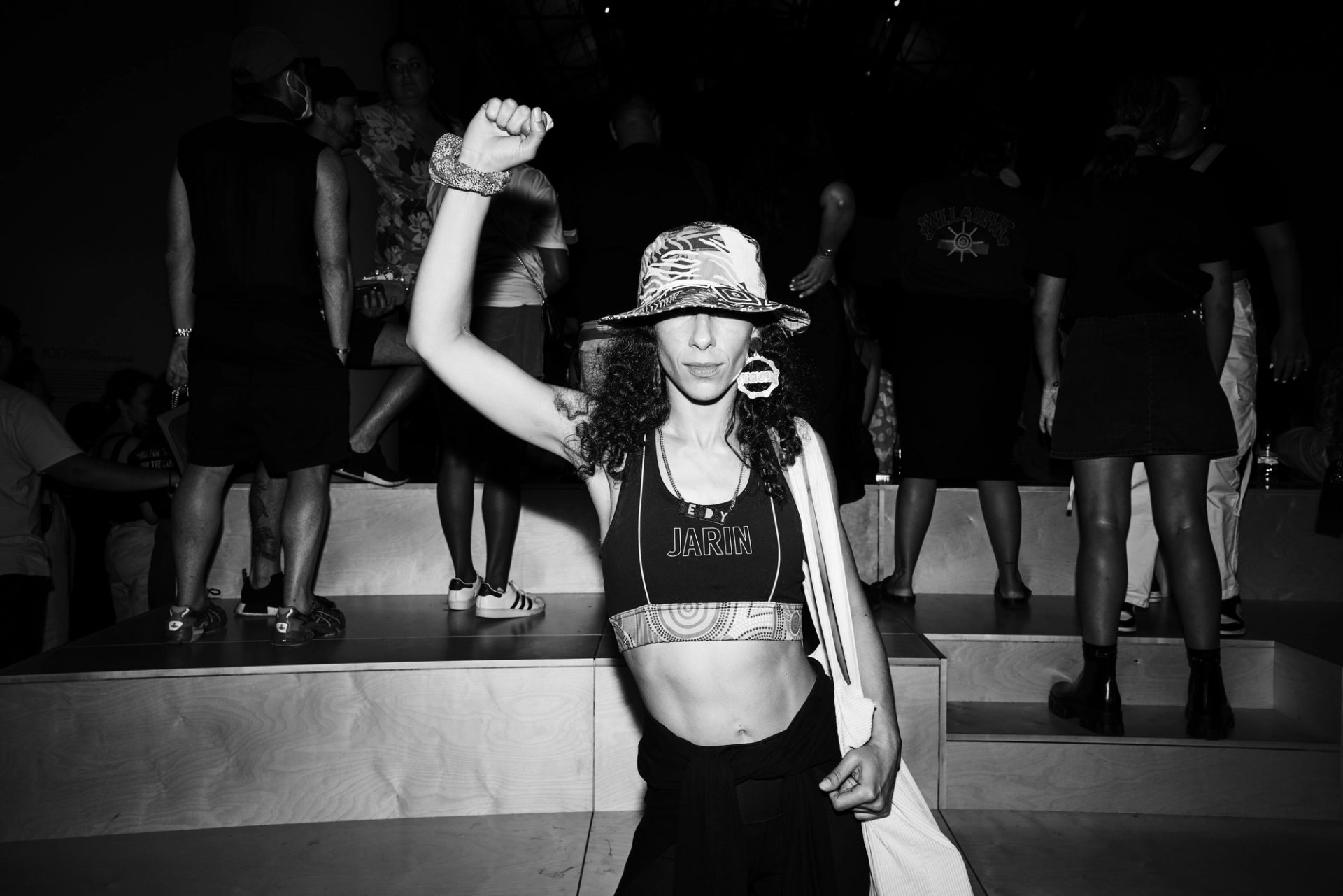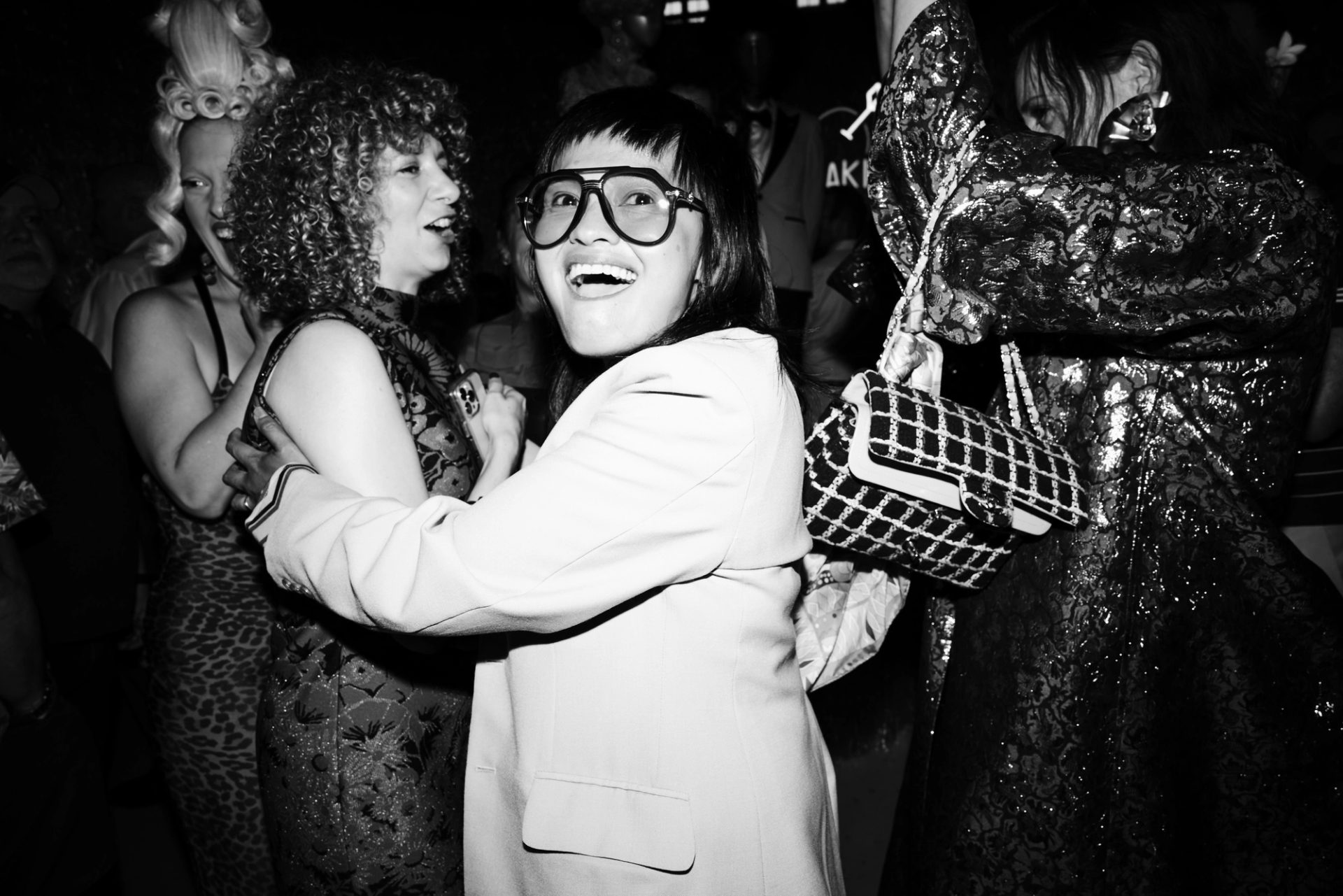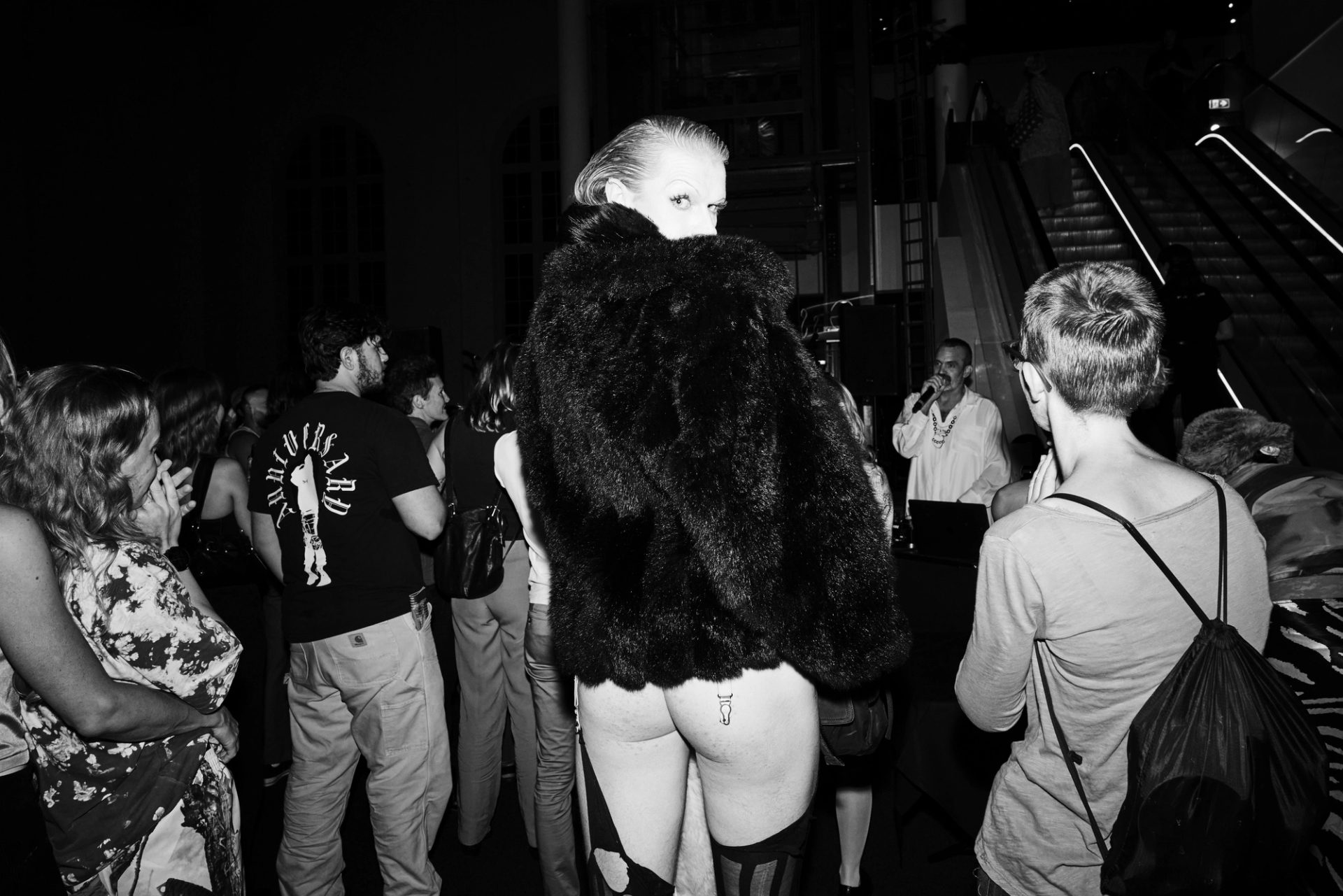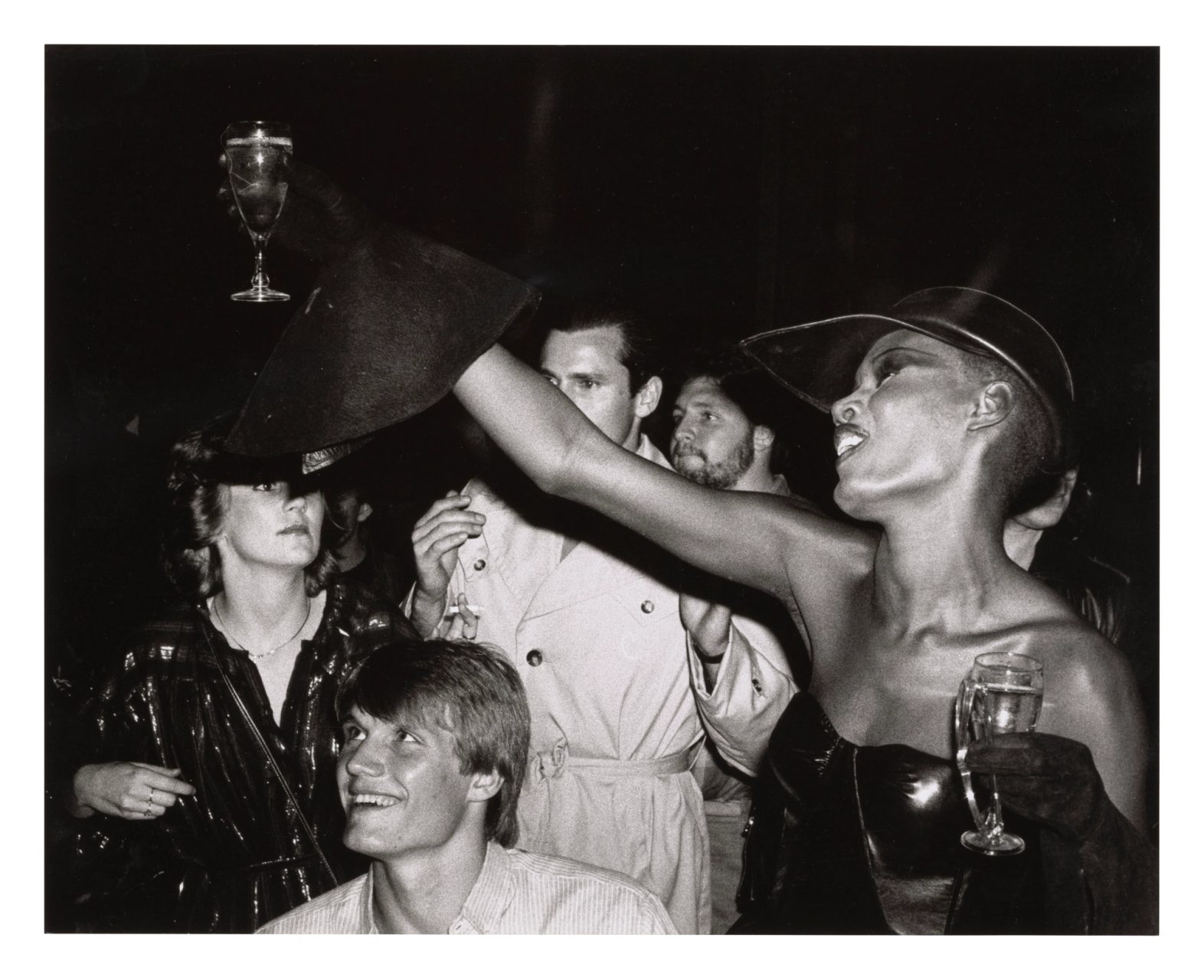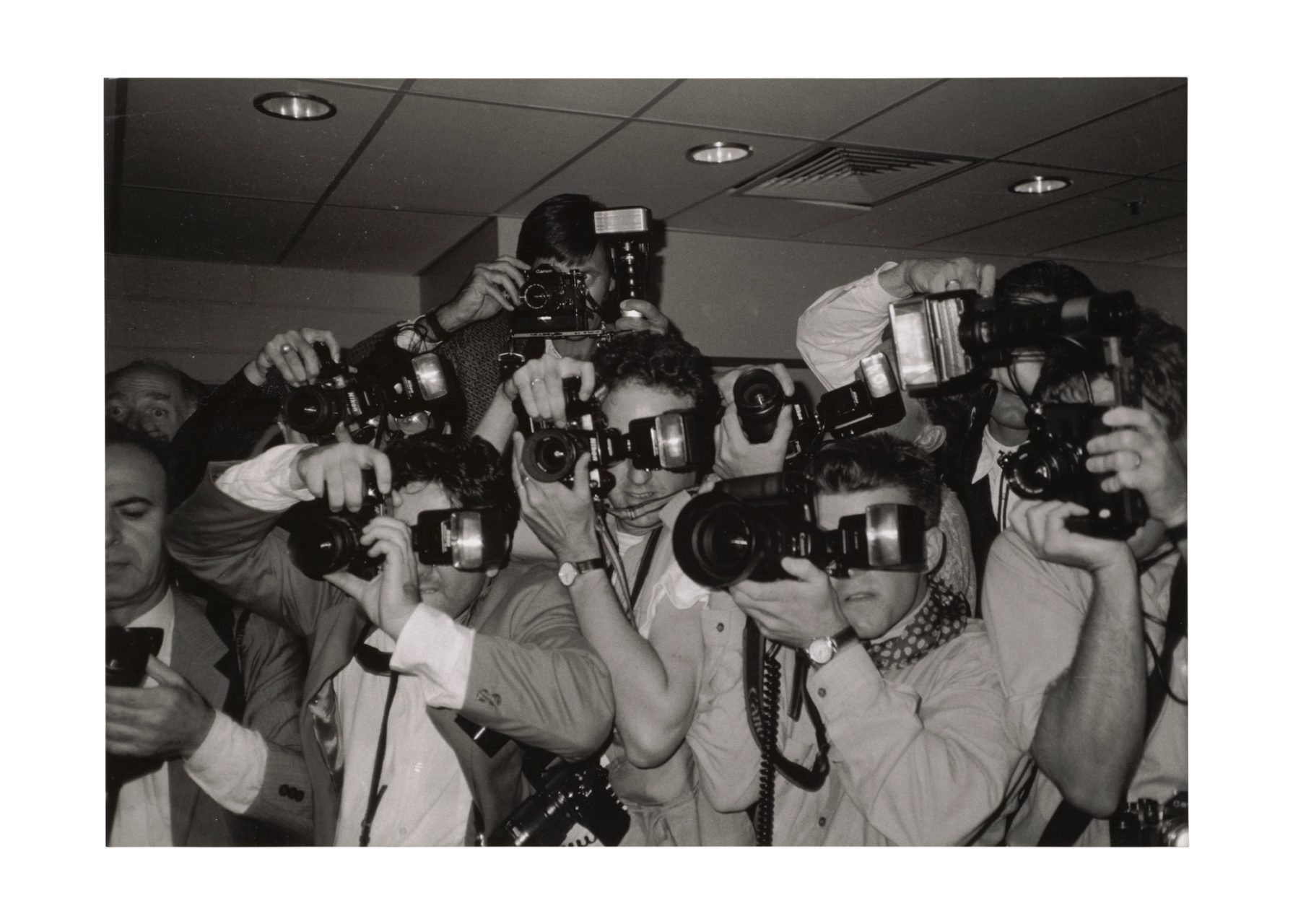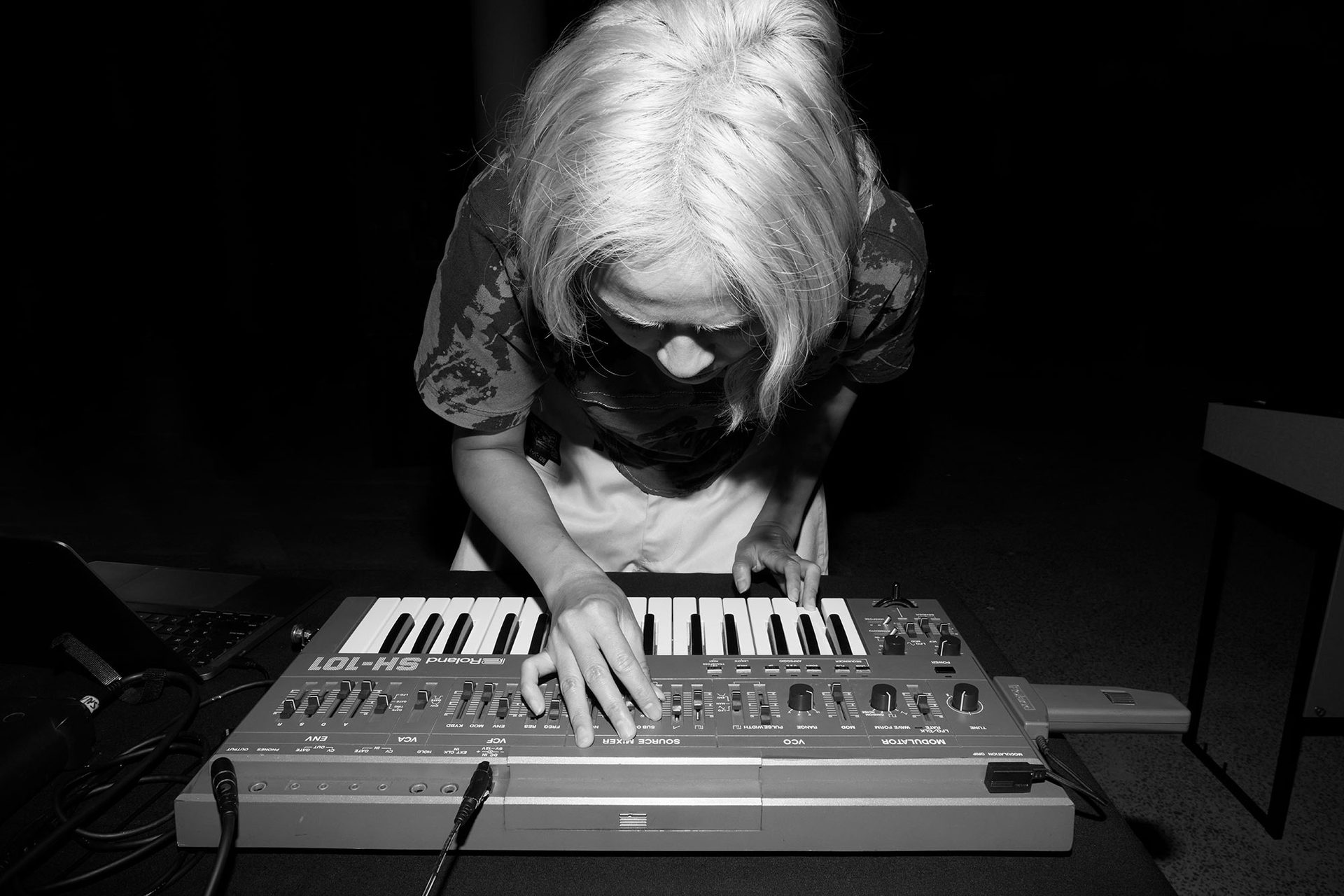Scenes from Late

‘Every party I do is different in some way, and you have to roll with it, understand the room, who your subjects are and gauge what they will and WON’T give you.’
Chloe Paul has a natural sense for shooting the social scene as she grew up immersed in the fashion and photography worlds: her mother is Melbourne designer Jill Clegg and party photographer Robert Rosen is a family friend. The photo medium she inhabits is both everywhere and often overlooked. But like Rosen, whose archive in the Powerhouse Collection inspired his 40-year retrospective Glitterati in 2021–22, Paul takes seriously the task of documenting something as ephemeral as an opening night event. Her party portraits in clean and contrasty black and white are distilled with energy and character.
After training in photography at RMIT University (1997–99), Paul honed her skills working in London (2006–11), and these days is as comfortable shooting with luxury brands such as Christian Louboutin and Prada, and for magazines like Harper’s BAZAAR and Vogue, as working with private clients and the rough-and-tumble of Sydney’s social scene.
In 2023 Paul was commissioned by Powerhouse to document a series of its award-winning Late events at Powerhouse Ultimo, including Absolutely Queer, Instrumental, Queerbourhood and Blak Powerhouse (the latter saw 3000 First Nations people gather on 26 January, turning what for many is a day of sorrow into one of power and positivity). Slipping from scene to scene with her Leica camera, Paul captured these diverse communities with a spontaneity that is infectious, creating snapshots for the future.
Powerhouse senior editor Michael Fitzgerald spoke with Paul about the commission, her photographic practice and what it means to make images in an ever more digital world.
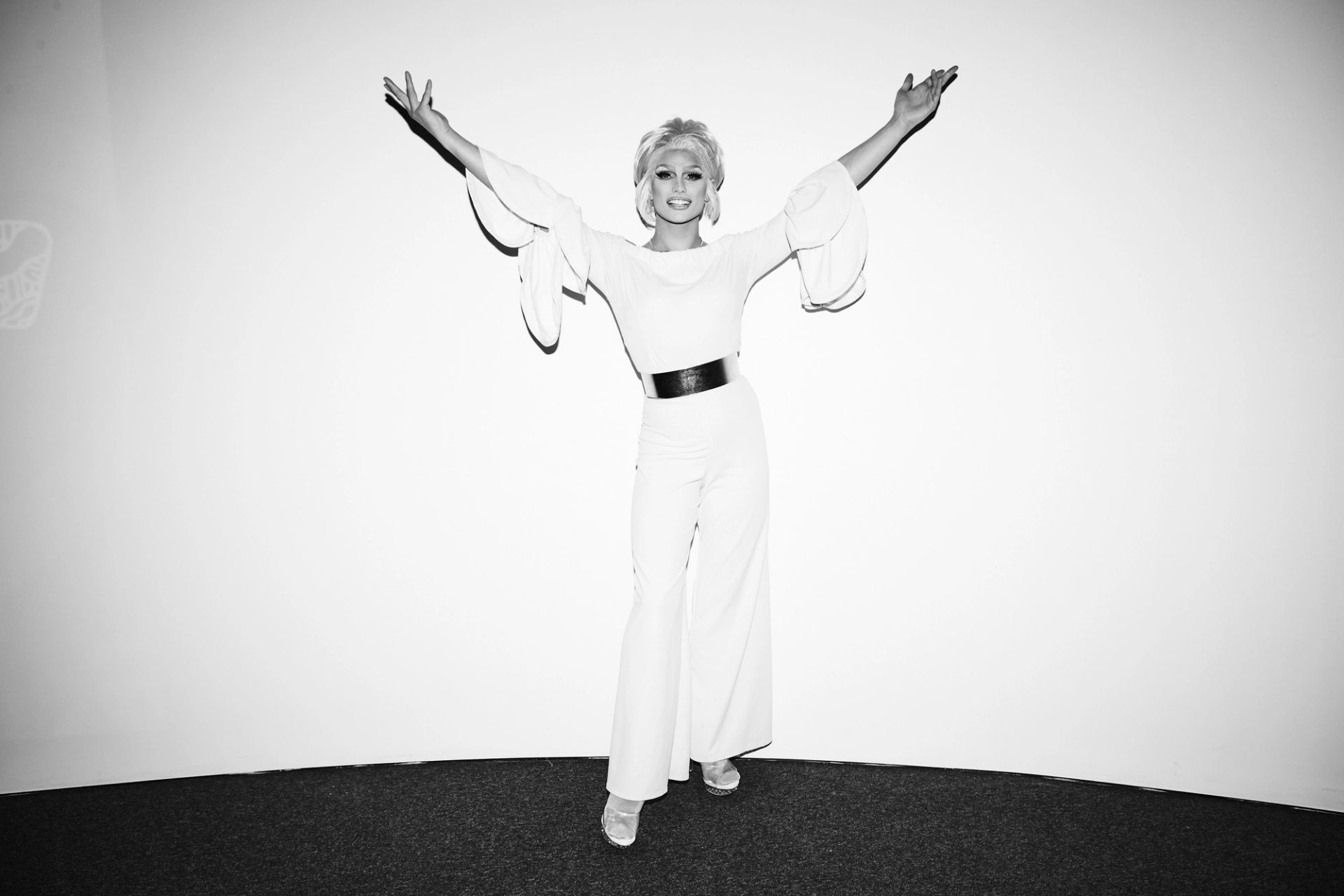
Michael Fitzgerald How did you approach your Powerhouse Late commission – for instance, how different was it to how you might approach other events or parties?
Chloe Paul When I was offered to come and photograph for Powerhouse, I really didn’t know what to expect. At first when I thought ‘museum’, I thought: quiet, conservative and even regimented. But walking into a Powerhouse Late is anything but: DJs, music, food, a diverse crowd and fabulous programs. What I have got to love so much is the freedom I have been given to shoot the way I want to; not having a brief to tick off and certain people I have to get. Powerhouse is all-inclusive and has given me a trust which lets me express how I want to shoot its guests.
MF The social context of party photography is interesting – whether it be the HIV/AIDS crisis of Nan Goldin and William Yang’s work, or Thatcher’s Britain with Dafydd Jones’s Tatler photos of the 1980s. Your Powerhouse Late images have their own rich social contexts, celebrating Sydney’s Blak and queer communities. How conscious were you of this social context – that you were capturing history?
CP I honestly think you can never predict the gravity of certain situations and events and how prolific they may become. What I can do is pick up on who wants to express a strong message and document it. I just love how the crowd shows up as themselves – they are not scared to show (or shy away) or be out to impress others. I find this very empowering and can only support their message by capturing it in the best way possible.
I just love how the crowd shows up as themselves – they are not scared to show (or shy away) or be out to impress others.
MF Robert Rosen’s knack of disappearing into the crowds he photographed seemed to be his successful modus operandi. As a family friend, what influence has he had on your evolution as a photographer? And how do you get people to let down their guard and reveal themselves so spectacularly, as in your Powerhouse Late commission?
CP What I love so much about Robert’s work is not only did he disappear into a crowd, but he would capture it on camera so well from the fly-on-the-wall perspective, giving a great insight into what these private parties and events were like. I think many social photographers hope to achieve this, and for many it is quite difficult. If I can get a subject to give me more of their personality than just a smile, then I feel like I have touched on more of their personality than what they initially wanted to give. It can be really hard to get someone to be vulnerable in less than a minute when they have never met you before. One thing I always like to be aware of is what sort of party it is, so at least I can dress to fit the part, becoming a chameleon. I love doing that. My mum was a fashion designer, so it is in my genes that I love clothes and dressing up. It can help people relate to me. Every party I do is different in some way, and you have to roll with it, understand the room, who your subjects are and gauge what they will and WON’T give you.
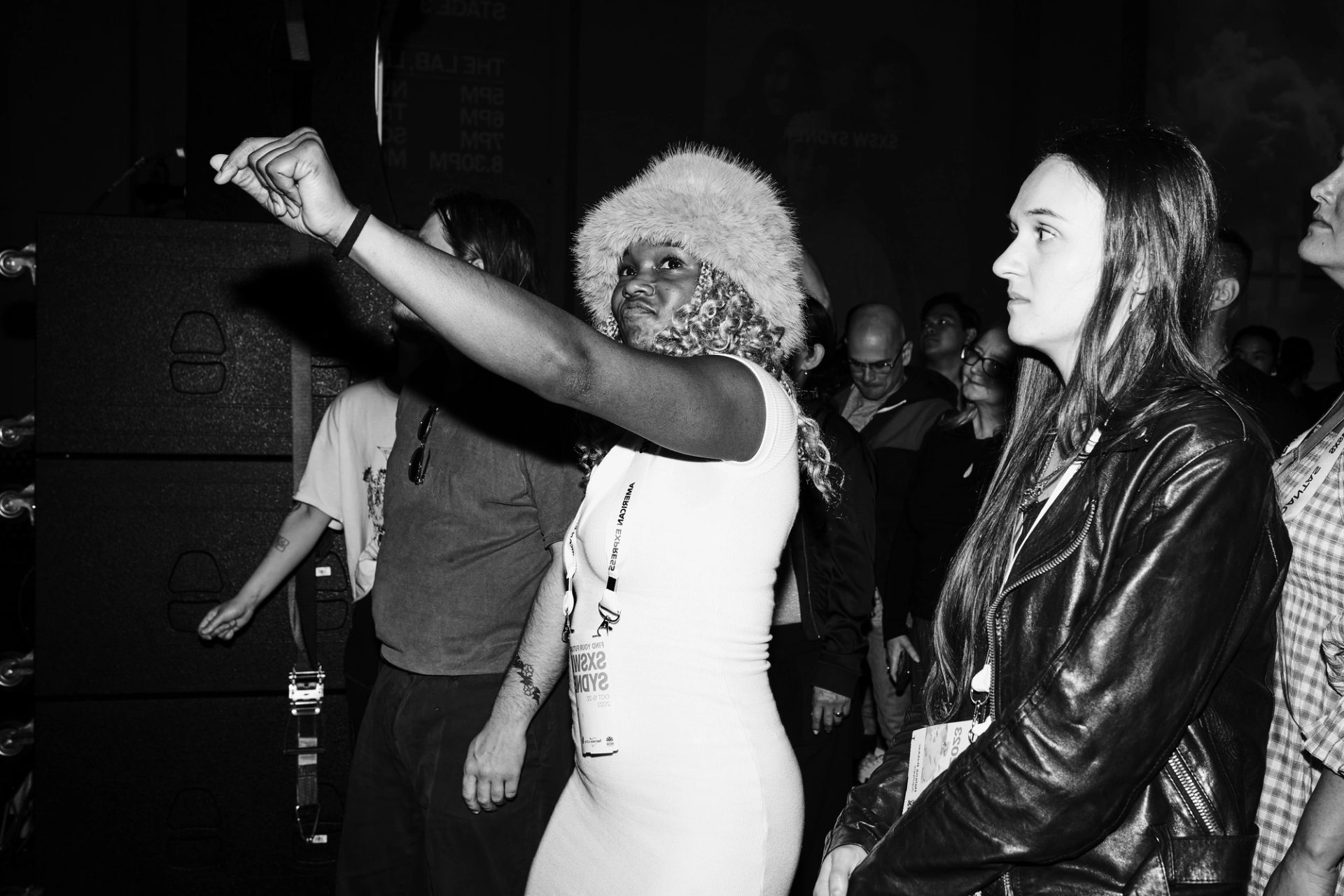
What I love so much about Robert’s work is not only did he disappear into a crowd, but he would capture it on camera so well from the fly-on-the-wall perspective.
MF There has been recent commentary about the impact of social media and Instagram influencers on photography, and what made the Y2Ks so different to our current image-controlled moment. How do you see the social photographer’s role as having changed in this world of proliferating online platforms, and how do you mediate it?
CP My career in photography really started when I was 18 – wow, I have shot a lot of parties in my time! I started on a film camera and had a huge flash gun attached. I remember shooting in clubs and it was so dark, and I only had manual focus. How I got sharp images amazes me. Back then there were no camera phones or digital cameras. This really allowed me to capture more candid moments. I am not saying that you cannot achieve it today, but I think you have to work much harder for the shot. People are aware they may be documented at any given moment, and they want to look their best. What I also find is so many parties today have become generated almost like a scene out of a movie, and I have to make it appear like it was an unmissable experience (when it might not have been). You are also now in a room with several hundred other guests who are also going to document the event, so again you have to work harder to find another more original angle to capture.
To finish, I think the digital world and AI is growing at a speed humans now cannot keep up with. It is out of control and there is no way of stopping it, so we have to learn to grow with it.
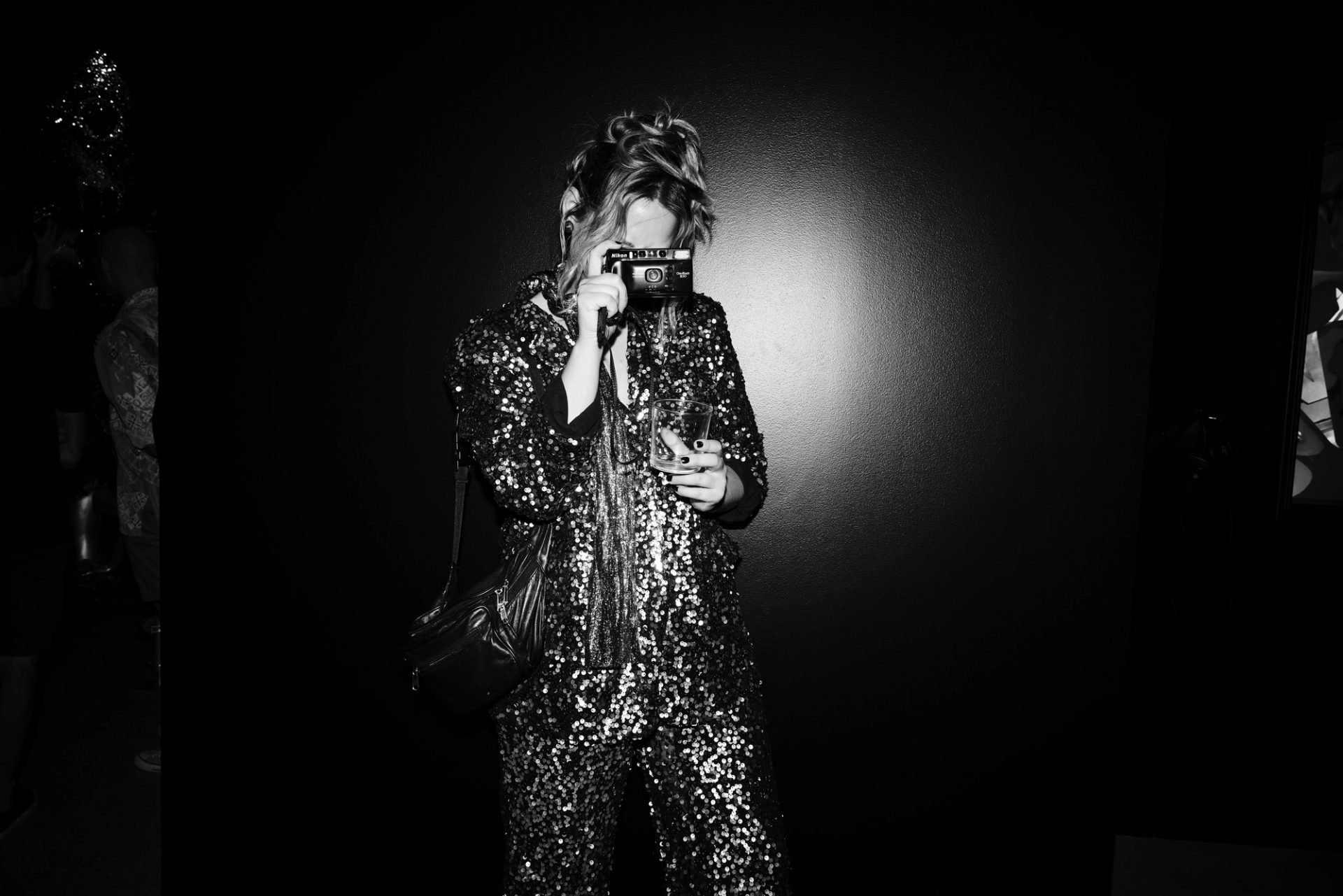
Powerhouse Late is a weekly series of free after-hours events that runs at Powerhouse Ultimo until 28 December 2023.










